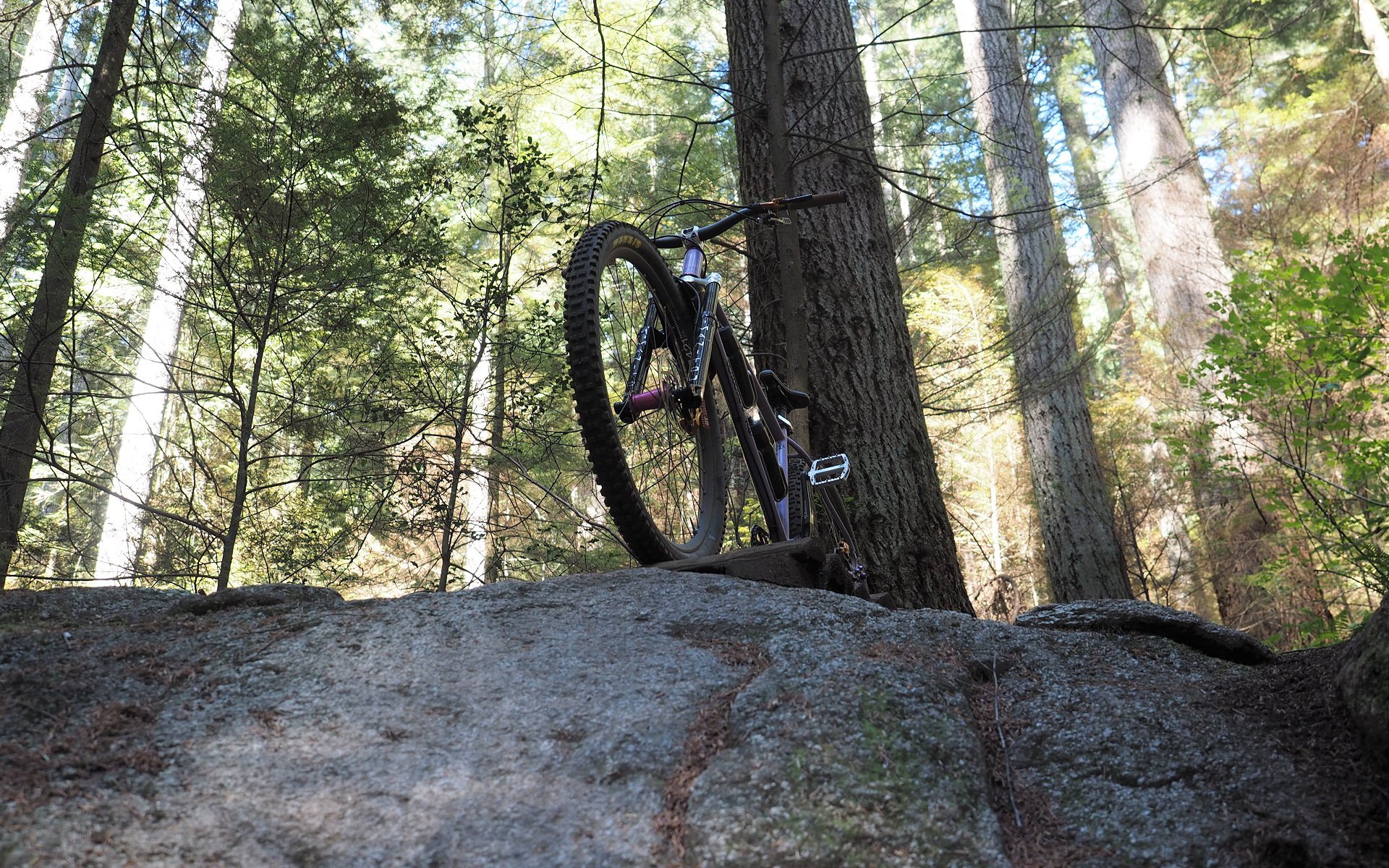
Long-Term Review | Teardown
The R7 Pro Fork - Manitou's Magic Toothpick
Light enough to please the weight weenies, stiff enough to smash the jump lines, and reliable enough to do it every day of the week." - Manitou
All Hail The 5" Trailbike
Call it a 120-140mm range of travel, maybe 150mm for the front with a cheeky bit of over-forking. Hardtail or full suspension. I love a great ride (almost) anywhere, ride (almost) anything 5" trail bike. Absolutely, there are times that I'm mentally committed to the idea that some imaginary next bike will be from the current generation of all-the-travel pedalable DH bikes like the Enduro or Nomad. Usually when I'm properly sucking on some nasty downhill trail. But generally, I'd wager a lot of riders, even locally on the North Shore, are over-biked for their best trail experience.
Now I'm sitting somewhere around 185lbs in my birthday suit. I'm not particularly smooth on a bike, and I'm a fan of looking at 'stiffness' as a system from my wheels, to my frame, to my fork, and my bar and stem. I also like to future-proof my gear. With all that in mind, my typical 120-140mm fork has long been something longer travel that I've lowered. A 170mm SR Suntour Durolux dropper to 120mm. A 170mm Manitou Mezzer lowered to 140mm. A 160mm Magura Wotan dropped to 130mm. I have a lot of examples from my history of bike ownership.
The 80-120mm adjustable, 32mm stanchion-equipped, Manitou R7 Pro is clearly something very different. I call it, the magic toothpick.
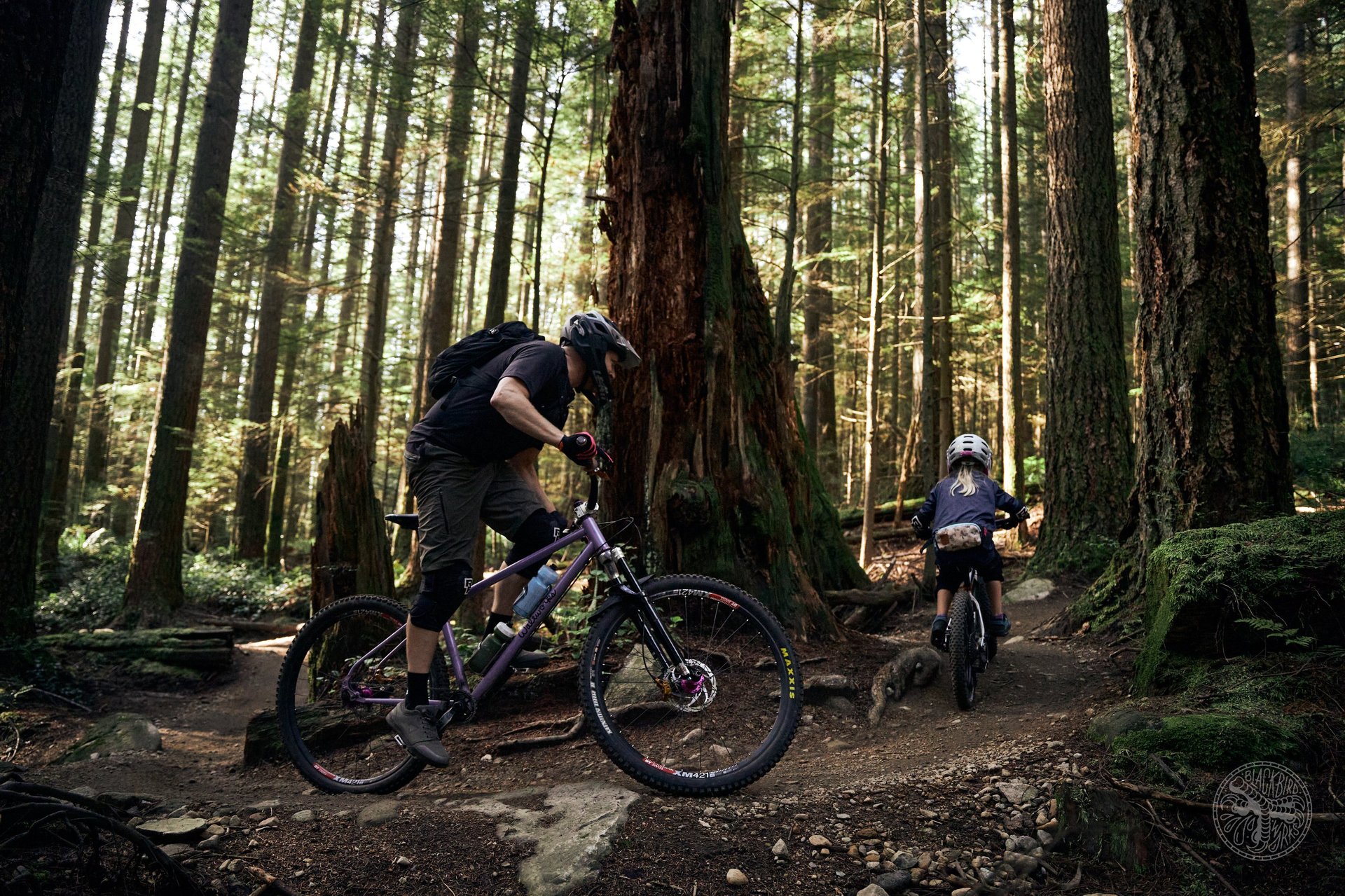
I've had the Manitou R7 for well over a year, but I was off my bikes for a chunk of time thanks to my ruptured Achilles. It's now properly overdue for a routine yearly service so I've put together my various experiences - hardtail, full suspension, and rebuild. Photo: Deniz Merdano
The R7 has a lot of very long-term Manitou tech: the Reverse Arch lowers, Hex-Lock axle, and extensive crown-stanchion overlap create a stiff chassis. The Dorado Air System is well-proven and allows for quick and easy travel and volume adjustments. The TPC damper with its foam compensator will be familiar to anyone who's opened a high-end Manitou fork in the last 20 years. It just works, and it works well.
What sucked me into wanting to review this fork, and there's not been a fork I've been as excited to review since I had the first crack at the Ohlins RXF 34 in '15/'16, is the marketing. It's a lightweight, sub-1700 gram, XC Race fork that's also for dirt jumping. And anything else you can ride on a 5" travel fork. Really?
It inspired me to drop about six pounds off my single-speed, without any plastic fantastic or other proper weight-weenieisms. It surprised me with a point-and-shoot character that never had me longing for a lowered Enduro fork instead. It made me laugh whenever I was off my bike looking at it.

The Dorado Air System scales nicely. I've had great experiences with 37mm, 34mm, and now 32mm chassis versions. Photo: JacVenture
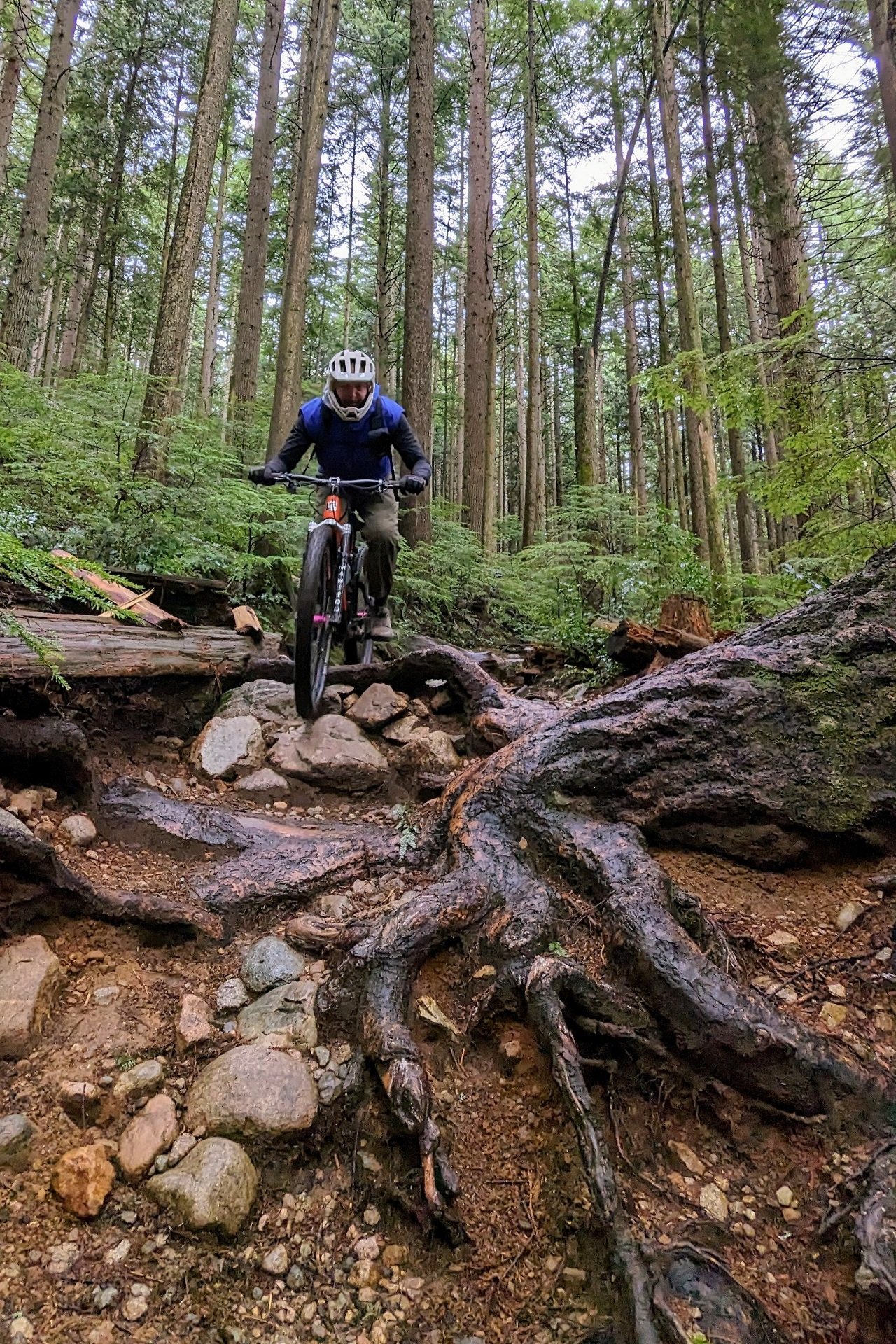
I've had the rebound slowed quite a bit for the recent extra-greasy conditions. I found there to be a very usable range. Photo: JacVenture
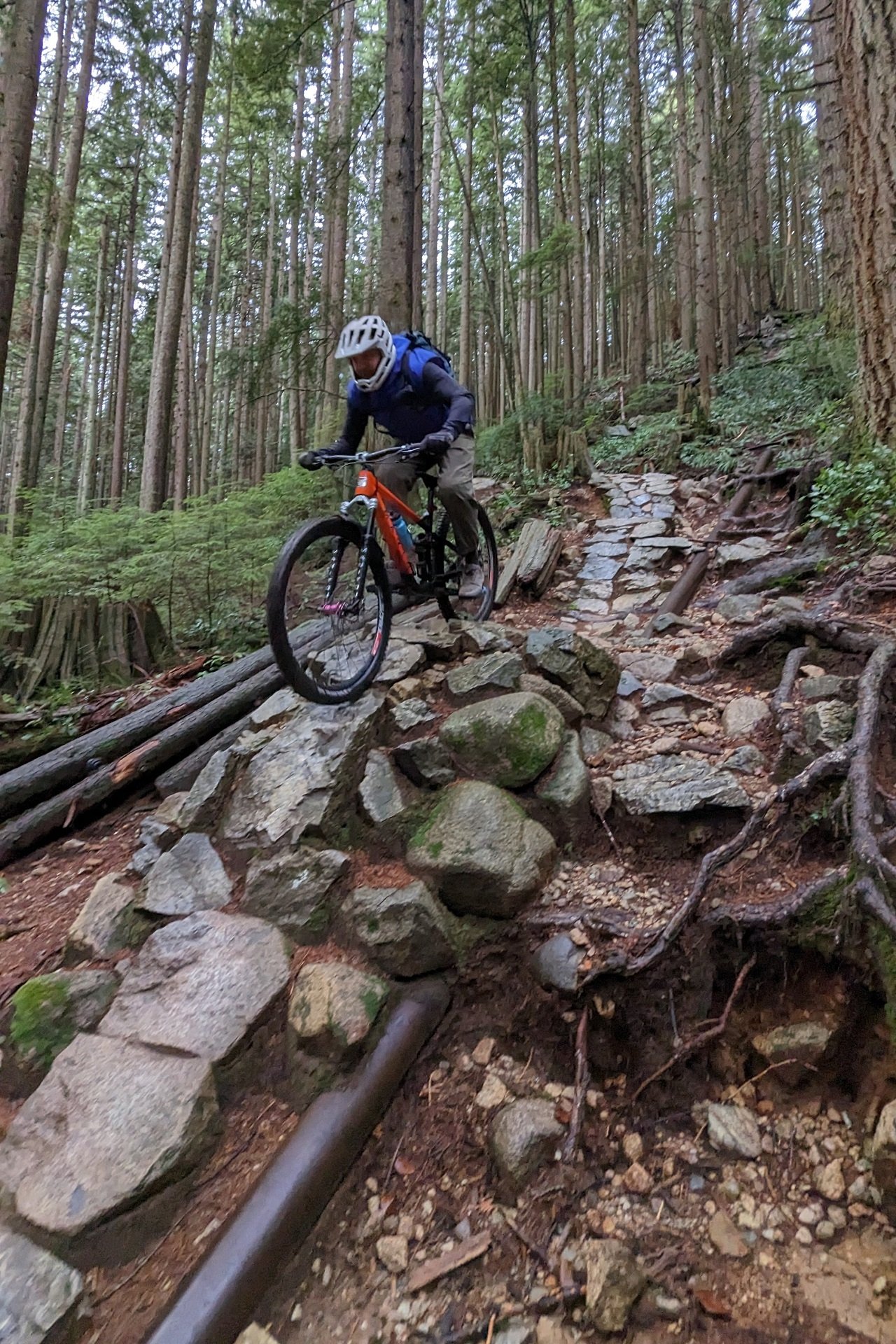
The VTT compression damper has three settings - Open, Trail, and Lockout. I ran it in Open with +4-6 clicks of low-speed compression (LSC). Photo: JacVenture
Mezzering Up
I've been thinking about the toothpick factor a lot lately, especially after my friend Penny took me to task a bit - nicely - about my take on shoe stiffness. A shoe that's on the flexy side at my weight and foot size may still feel overly stiff to her. As much as bicycle stiffness is a system, it does raise a question of whether ever-more sophistication and specificity mean a future of manufacturing products like weight-specific handlebars and rims.
I don't own a crystal ball, but I think that Manitou needs to make a longer travel version of the R7. If the 32mm chassis works fantastically for this 185lb rider it stands to reason that a 140mm version (weight limited - no problem), would be an excellent way for a lighter rider to drop grams with no compromises.
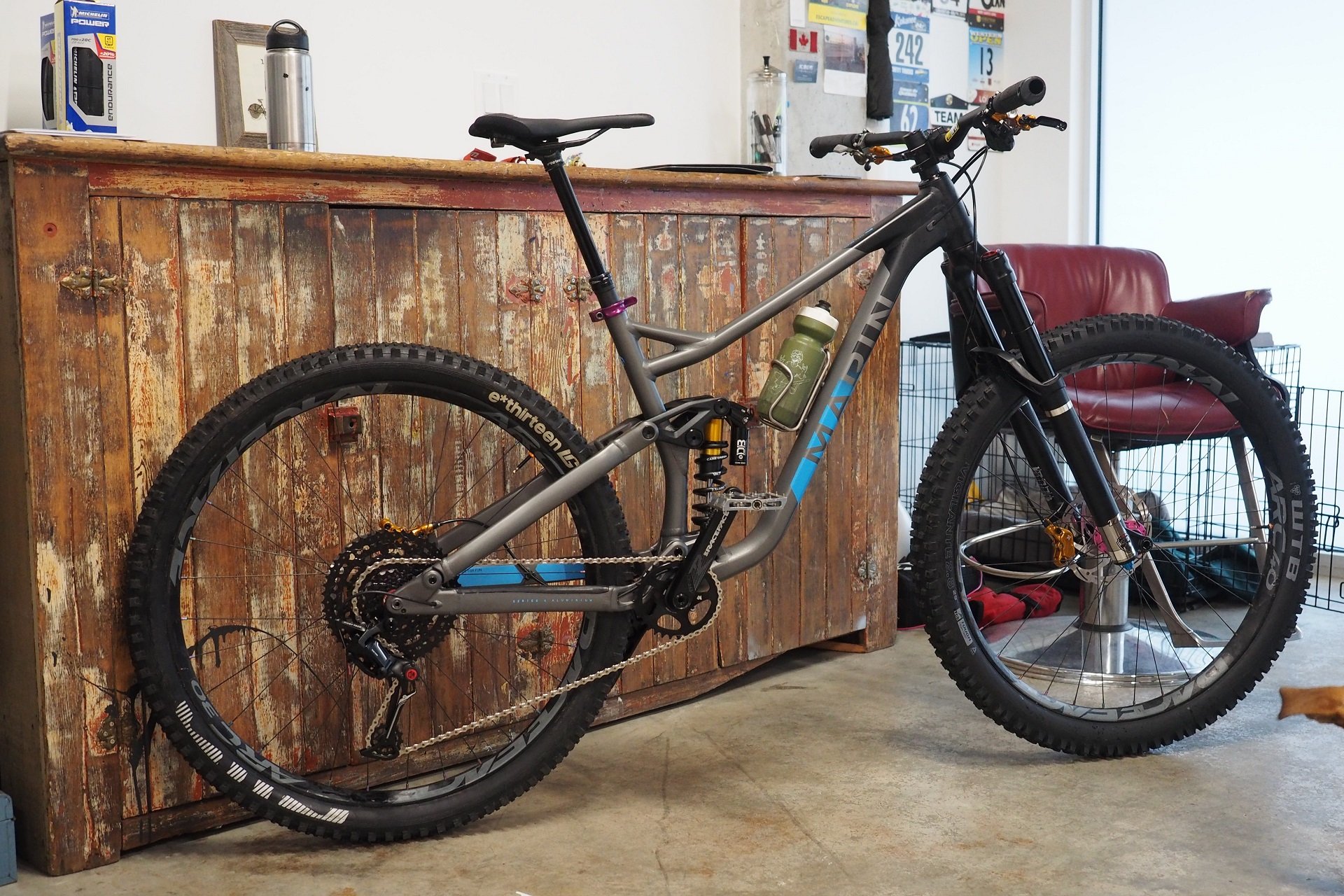
There are sections of trails and days when I'm just off where I miss the extra travel of the Mezzer Pro and Marin AT frame.
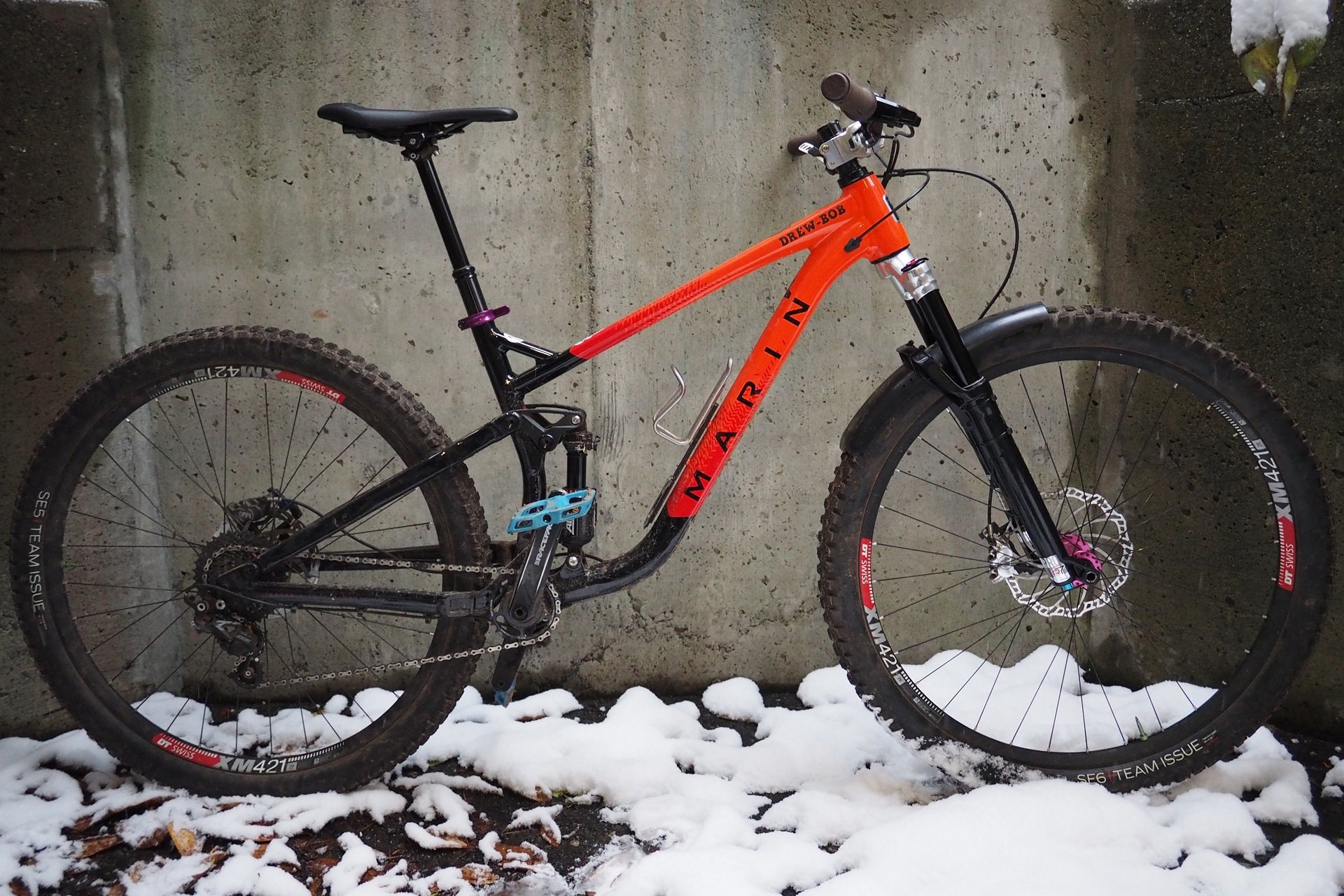
But the geometry on my 5-and-5 Marin Riftzone is very similar, thanks to the -2° Wolf Tooth angleset, and I find it more fun on climbs and Tech-C trails.
Actually, said lithe rider would likely have an experience upgrade with the 32mm platform beyond the weight savings. That's thanks to reduced friction resulting in a smoother fork because of less surface area of seals and bushings, and also a more compliant chassis. The 37mm stanchioned Mezzer fork can be easily lowered to 140mm travel as well so I think that's a lovely overlap point for the two freshest Manitou platforms.
I know some decently large-sized people who've switched back to the Fox 36 and 35mm Lyrik over the 38 and Zeb based on chassis stiffness, or who've found the larger-stanchioned chassis felt worse sooner in the service cycle. I'm not saying that's a universal experience, but it's food for thought.
For the record, it's not a selfless suggestion. A 140mm R7-LT would be an amazing fork for the front of my wife's hardtail and I think it would complement Manitou's current lineup of grom forks as well.
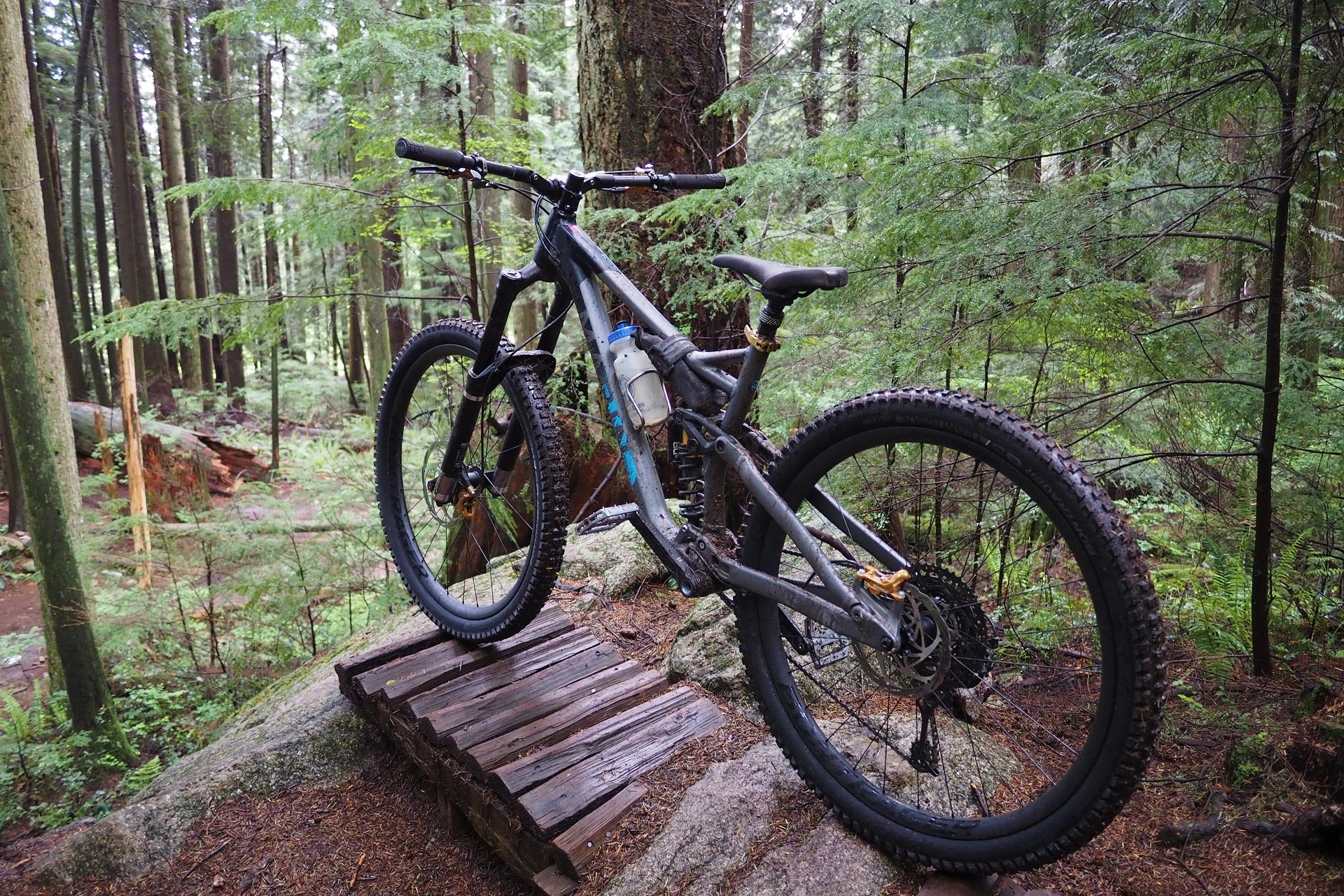
As with the longer travel Mezzer, the R7 Pro rides quite high in its travel, which is an asset when you only have 120mm of it and sag eats a lot coming down steeper terrain.
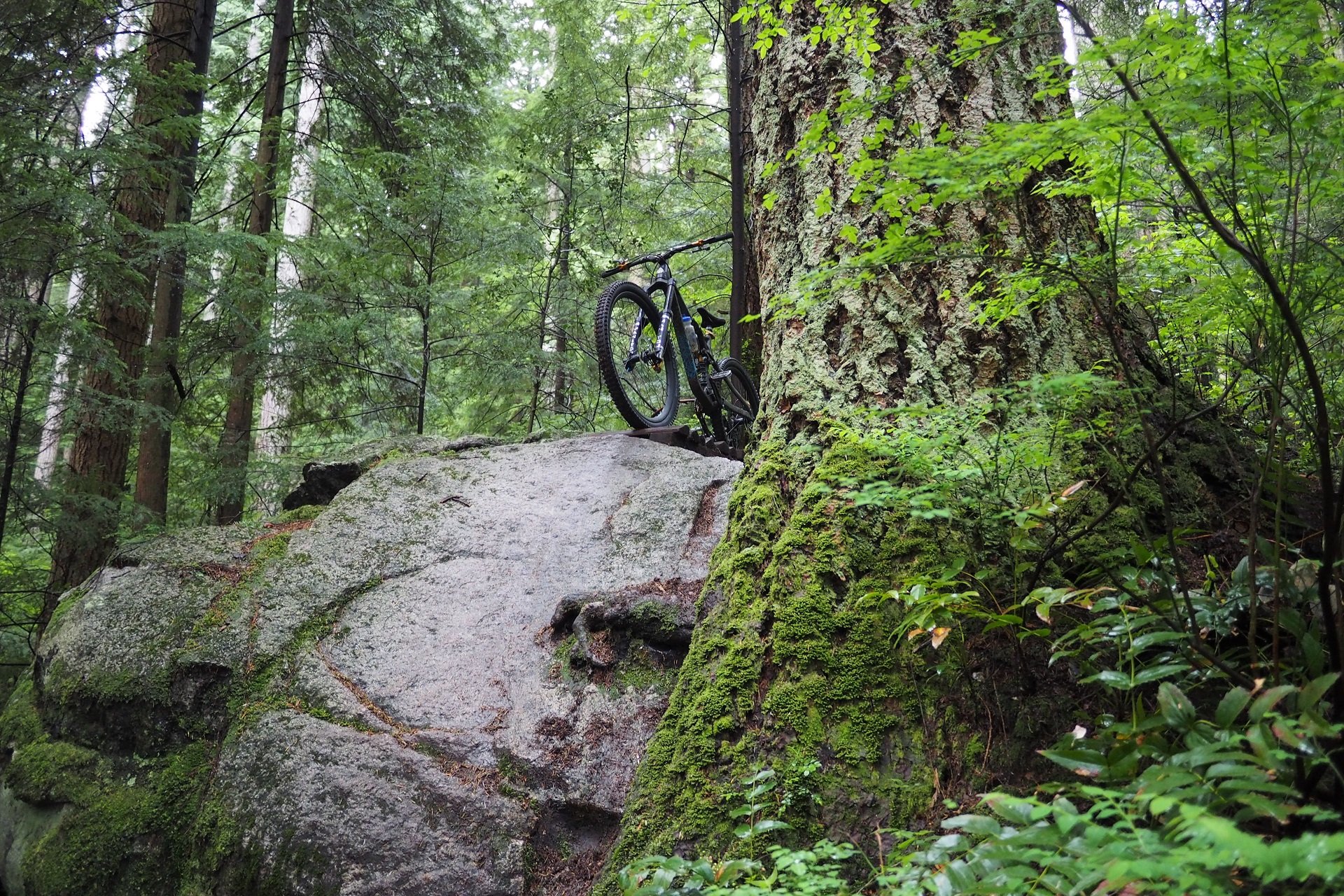
I'll mention that over-forking the Shore is still a good policy for folks that like to run a softer suspension setup, or run suspension products that don't have as much initial or mid-stroke support.
The R7 uses volume tokens (IVA) versus the additional air chamber (IRT) that will be familiar to folks who've ridden other top-end Manitou forks.
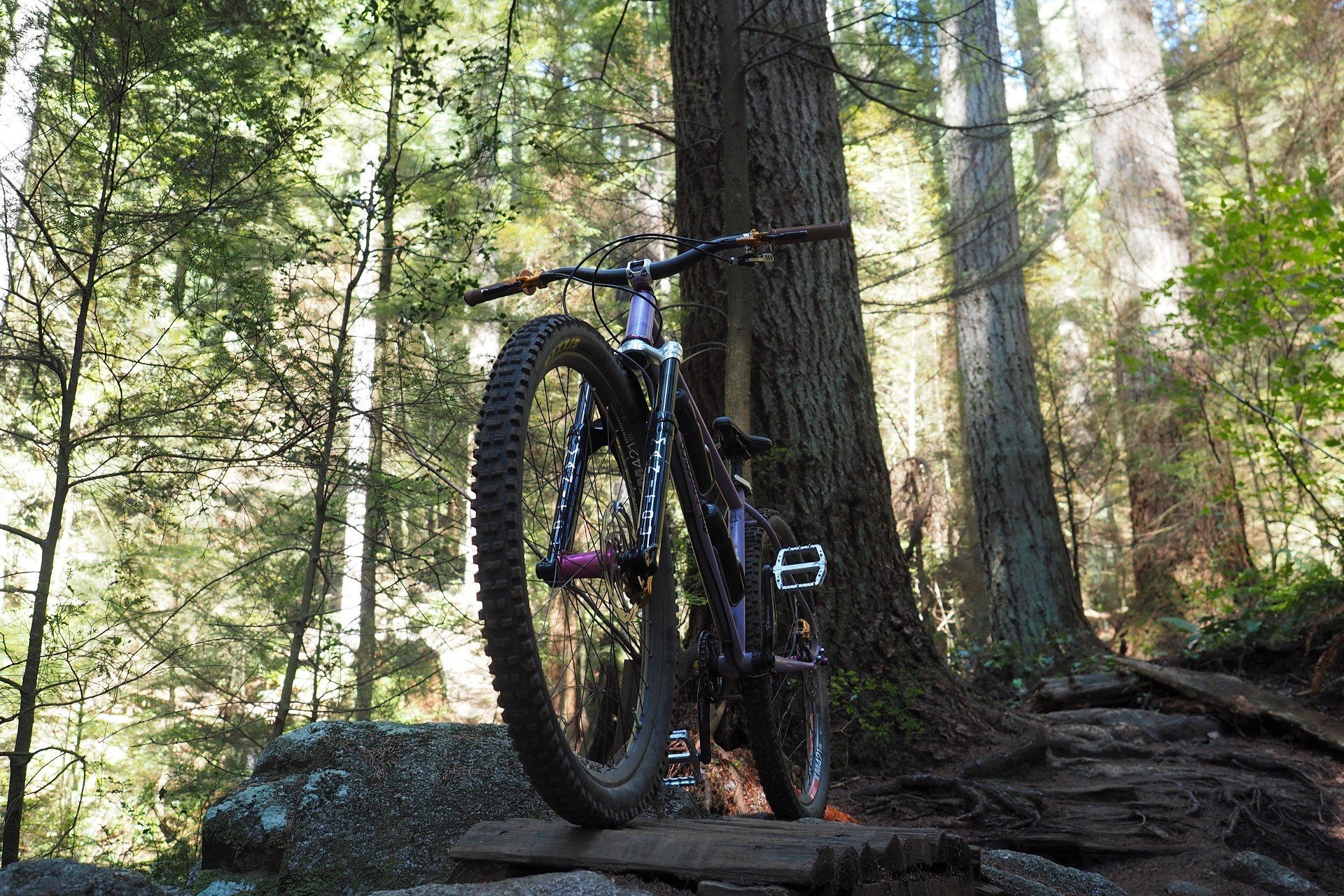
If it's not clear from photos, I tend to ride the same trails whether I'm plodding along on my rigid bike, trying to keep up with the We Are One Arrival, or riding something in between.
Teardown & Setup
I'm well past 100hrs on this R7 Pro and the first thing I'll note is that the crown steerer unit (CSU) does not creak. Not a peep. I had this independently confirmed by my friends at SuspensionWerx - who do not service Manitou products. Normally I would just ask you to take it from me that when I say something doesn't creak, it doesn't creak. However, with the magic toothpick, it was a question that came up quite a bit in conversation.
This is just a sample size of one and more manufacturers seem to be leaving prevalent CSU creaking issues in the past with better quality control and design. The R7 has a significant overlap of both the crown-steerer and crown-stanchion interfaces and that's what counts more than stanchion size when it comes to chassis issues.
Before I go any further, if you want to dig deeper than what I'm showing here, Manitou does have a good service guide for the R7 platform on the website.
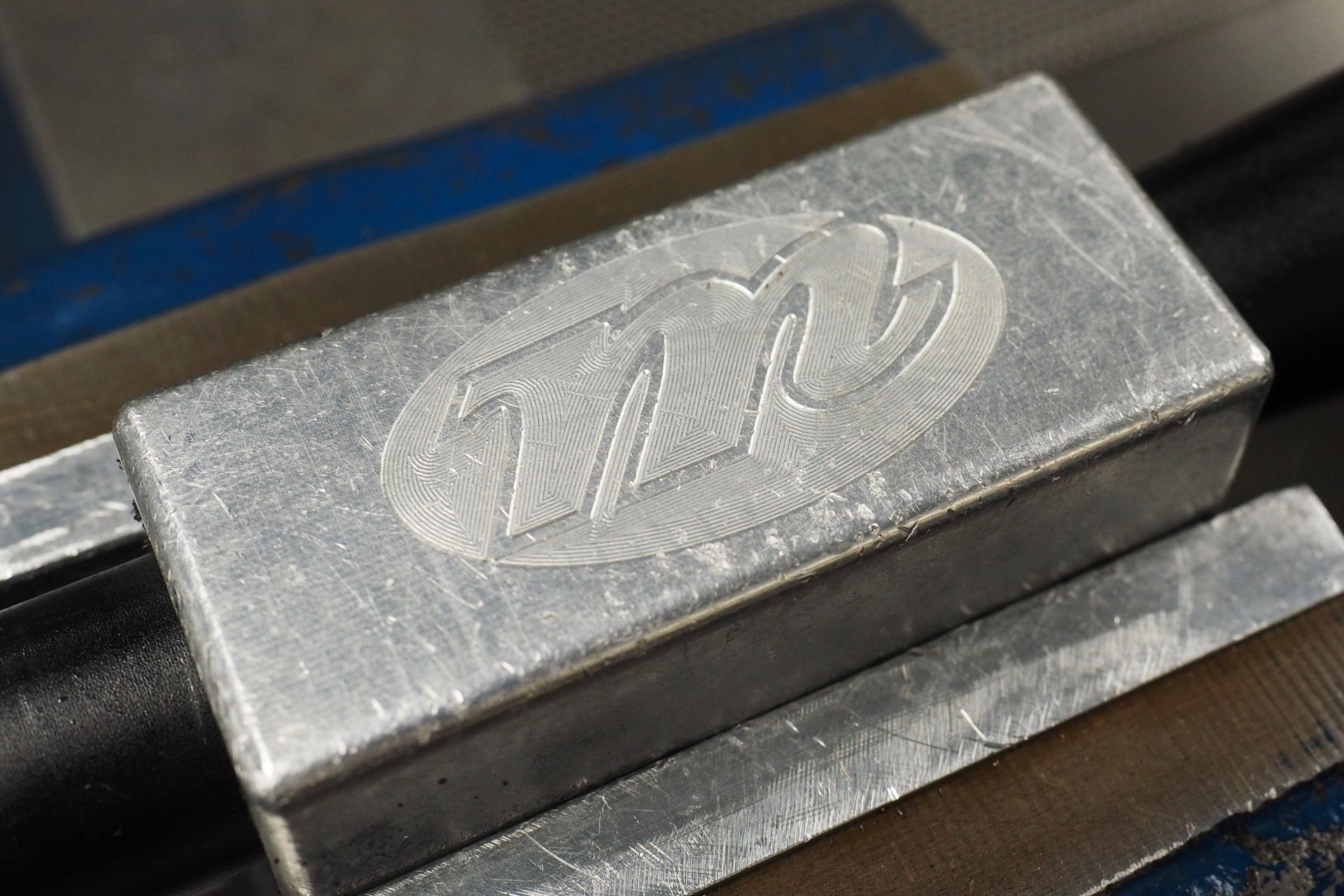
Throwback fork block. There was a time, twenty years ago, on the North Shore when Manitou was second only to Marzocchi in terms of the number of forks you'd see. Sherman's and Dorados everywhere.
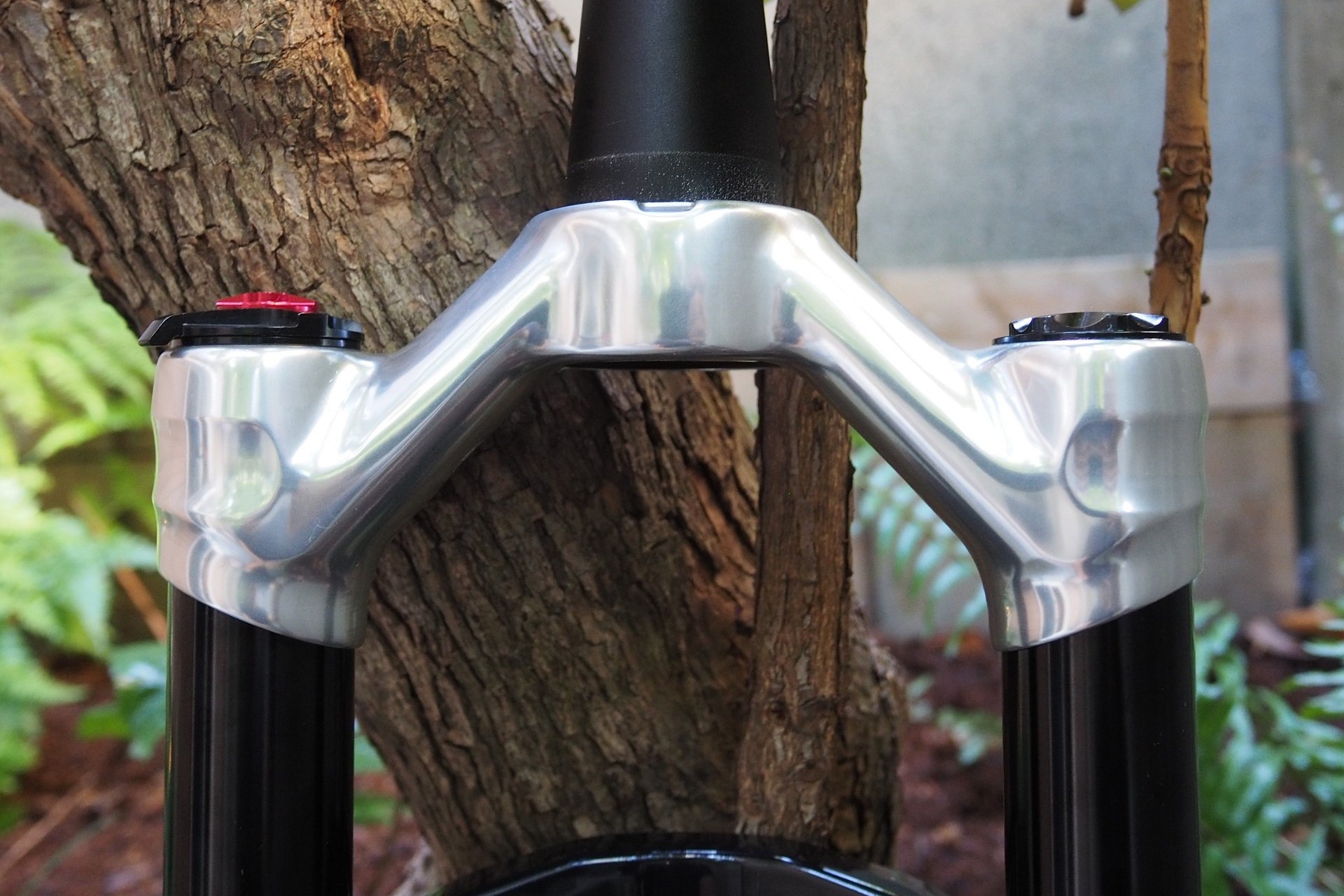
Impressive crown-steerer and crown-stanchion overlap. The 32mm stanchioned platform never felt wimpy at 120mm travel.
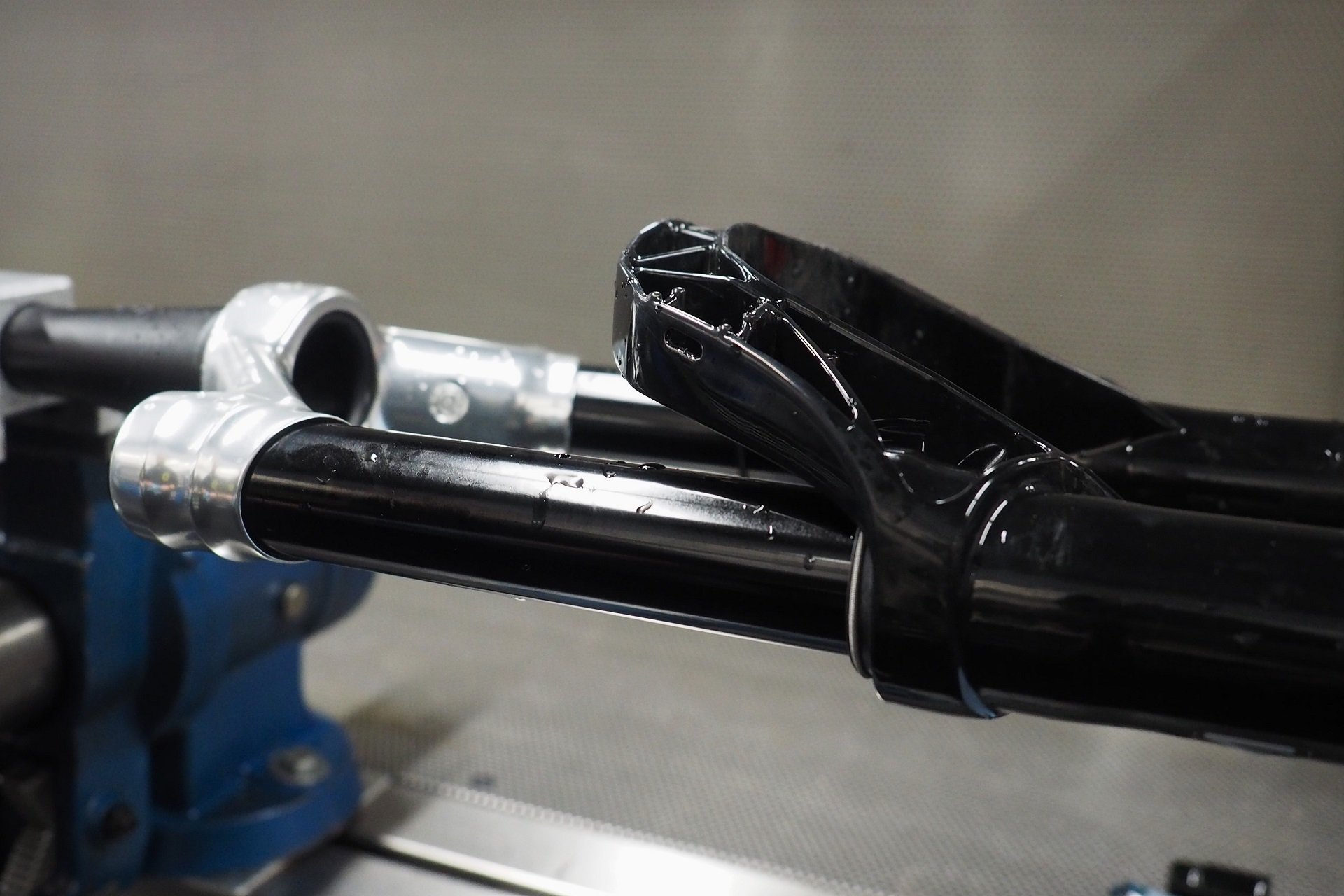
I like the Reverse Arch aesthetic but I know it's not for everyone. I thought the Mezzer Pro was a great looking for with the throw-back graphics, but the silver crown on the R7 is a step up.
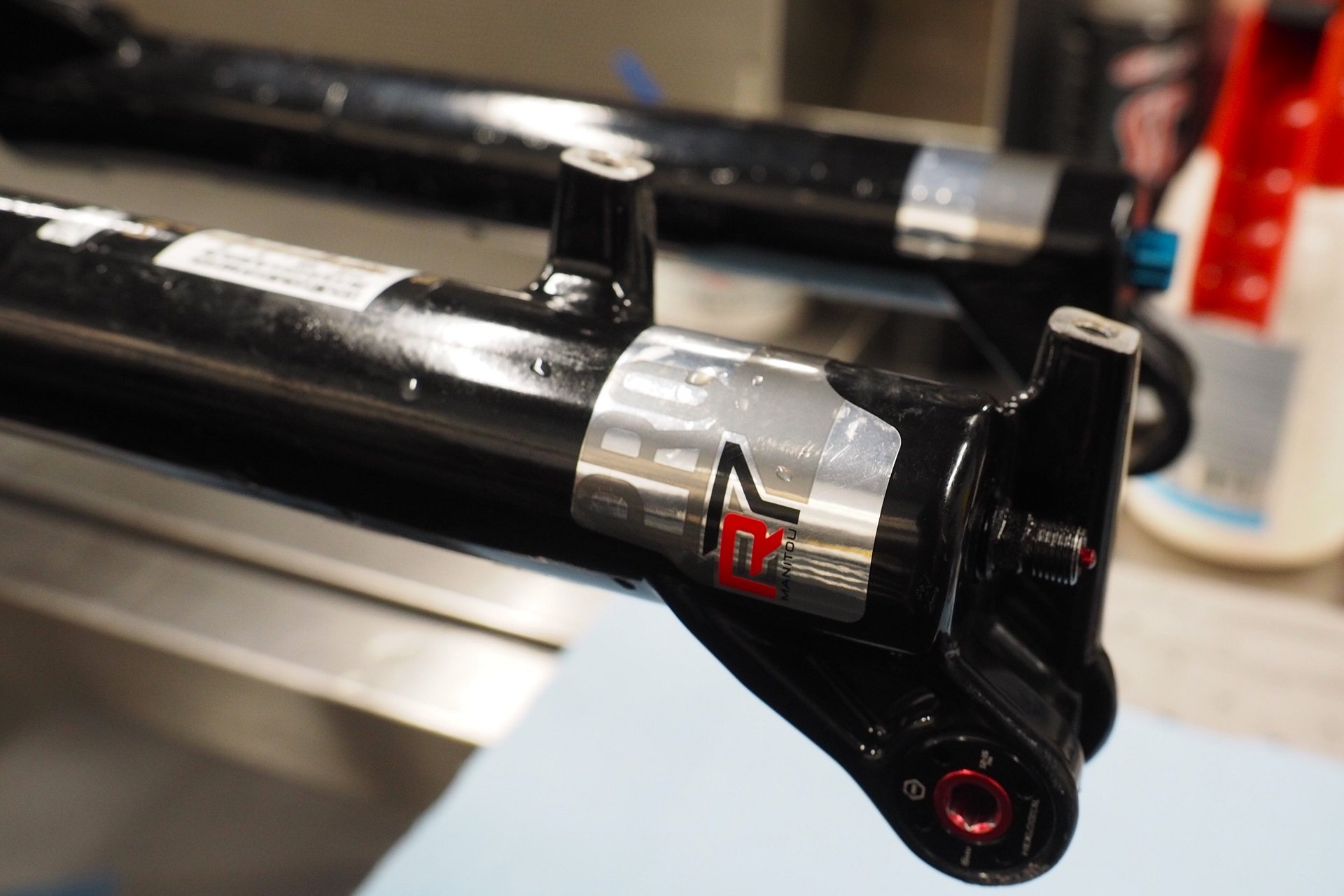
Manitou previously listed the R7 Pro as being 180mm max rotor size, but that's been updated to 203mm in keeping with their up-for-anything 32mm fork option.
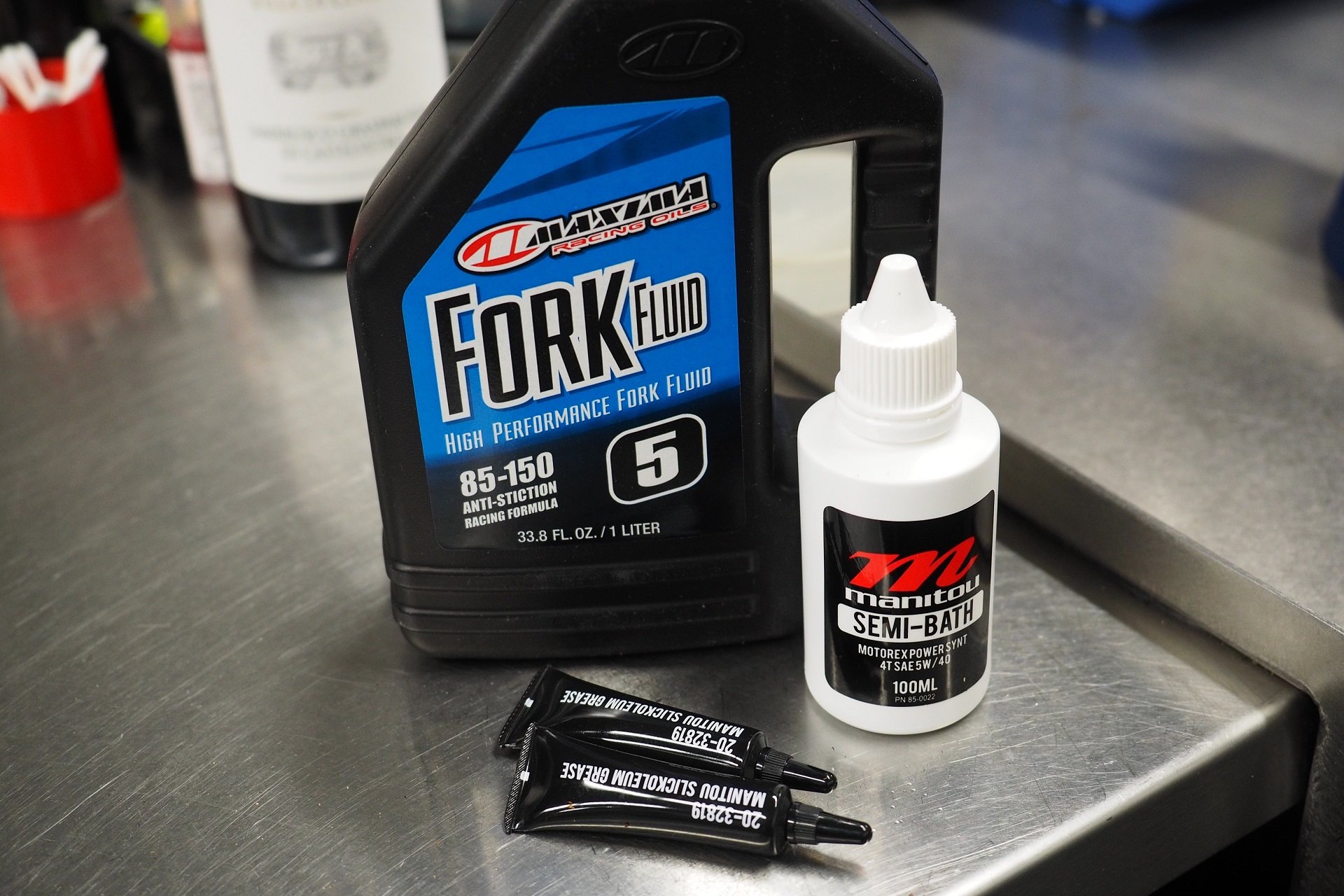
Slickoleum, Motorex, and Maxima are all represented on the Hayes-Manitou recommended fluids list. Again, the DIY fork rebuilder can find lots of other recommendations from folks working on their own R7 forks.
With 18-20% sag I was happy with the existing range of low-speed compression (LSC) and low-speed rebound (LSR) adjustment but I've had feedback from a couple of people riding the R7, one who is much lighter and one who is running significantly more sag, who were asking after more or less compression damping.
The good news here is that your Manitou service center or the suspension-happy home mechanic can revalve the shim stack to obtain different performance characteristics. For the home mechanic with access to shims, there is plenty of tuning information available with a quick internet search.
I'll warn you it's a bit of a rabbit hole though. When inflating the air system you're filling the positive and negative chambers at the same time. The fork doesn't self-balance with a transfer port (aka dimple) like a RockShox, Fox, SR Suntour EQ, etc. This is what makes it so easy to travel-adjust, via spacers, but it also has many a home tuner playing with changing the volume of the positive and negative chamber by adding or removing spacers and sometimes trimming bumpers.
I mention it for two reasons. First Manitou does sell both the air system and damper units in halves, and all the small components are also available. So, if you get too curious and want to go back to stock, these forks are well-supported. Also, if you are going to start trimming stuff, don't forget to check your clearance between the Reverse Arch and your downtube, and your tire and fork crown before you go out for a ride.
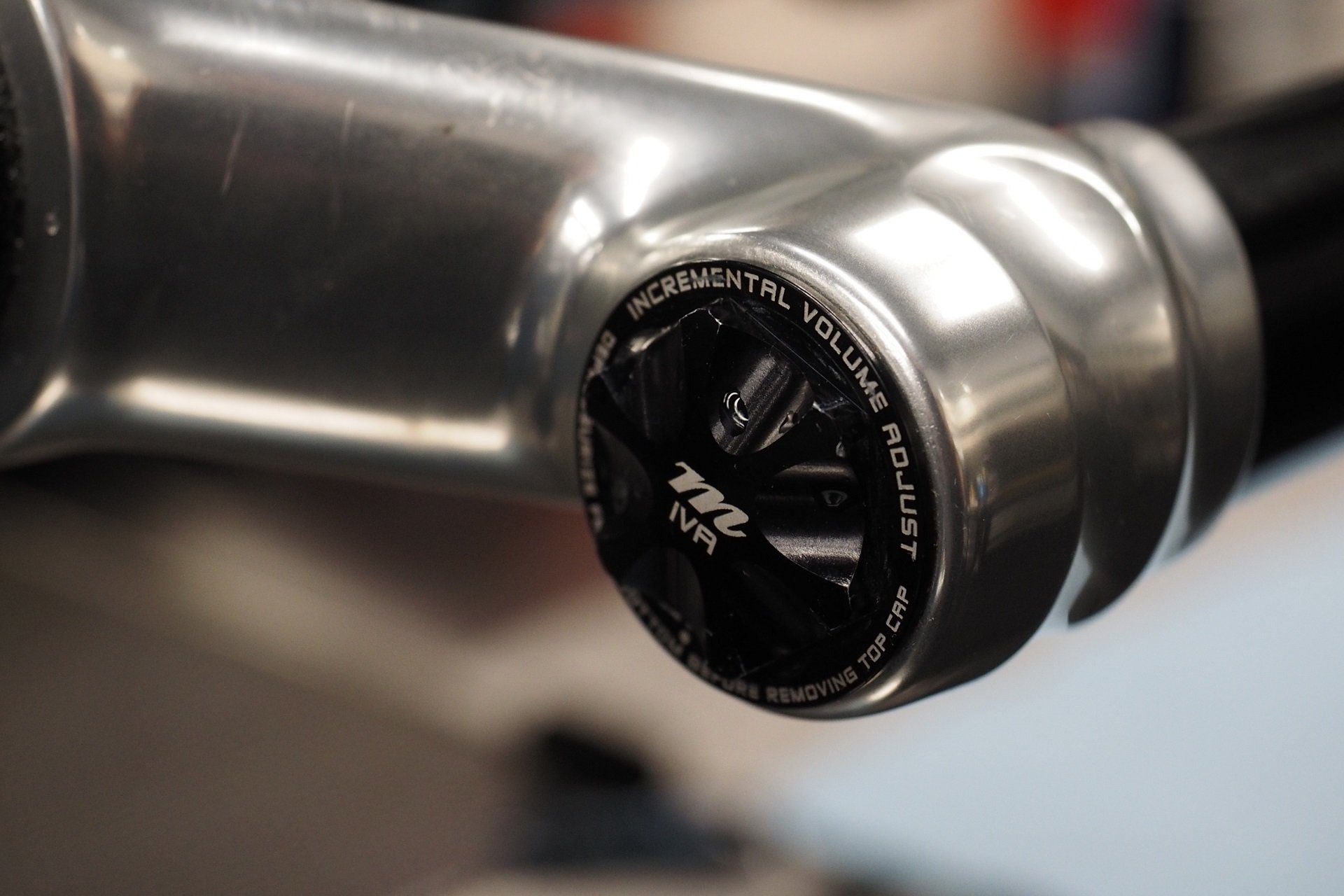
The IVA air system contains four spacers that move the air piston up or down to adjust the volume.
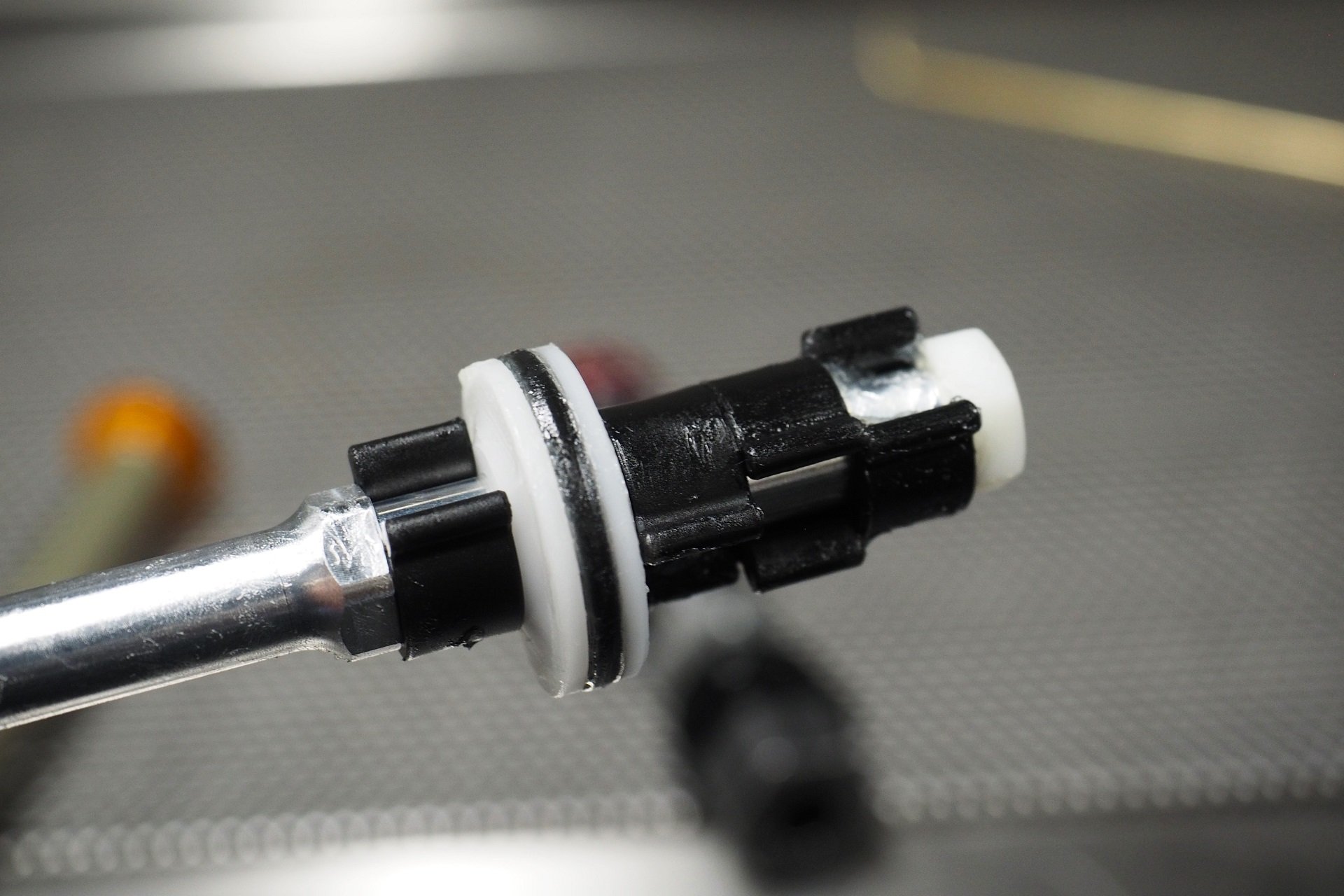
One spacer above the piston, one spacer less than max volume, was perfect in terms of getting all 120mm travel but rarely finding the bottom harshly.
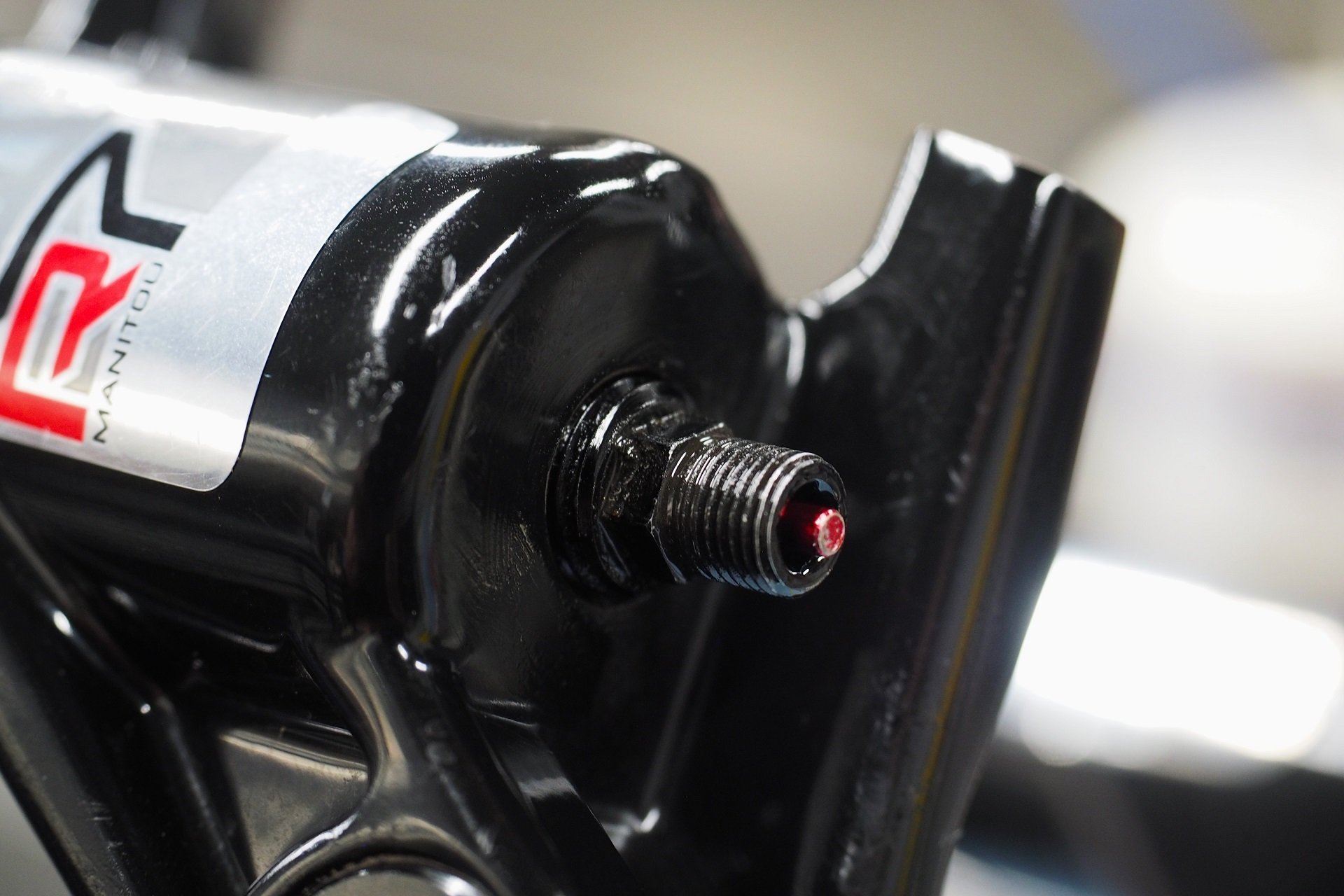
I like to adjust my air pressure with my bike in a stand or with the front wheel otherwise unweighted - friends are great for this while dialing in setup.
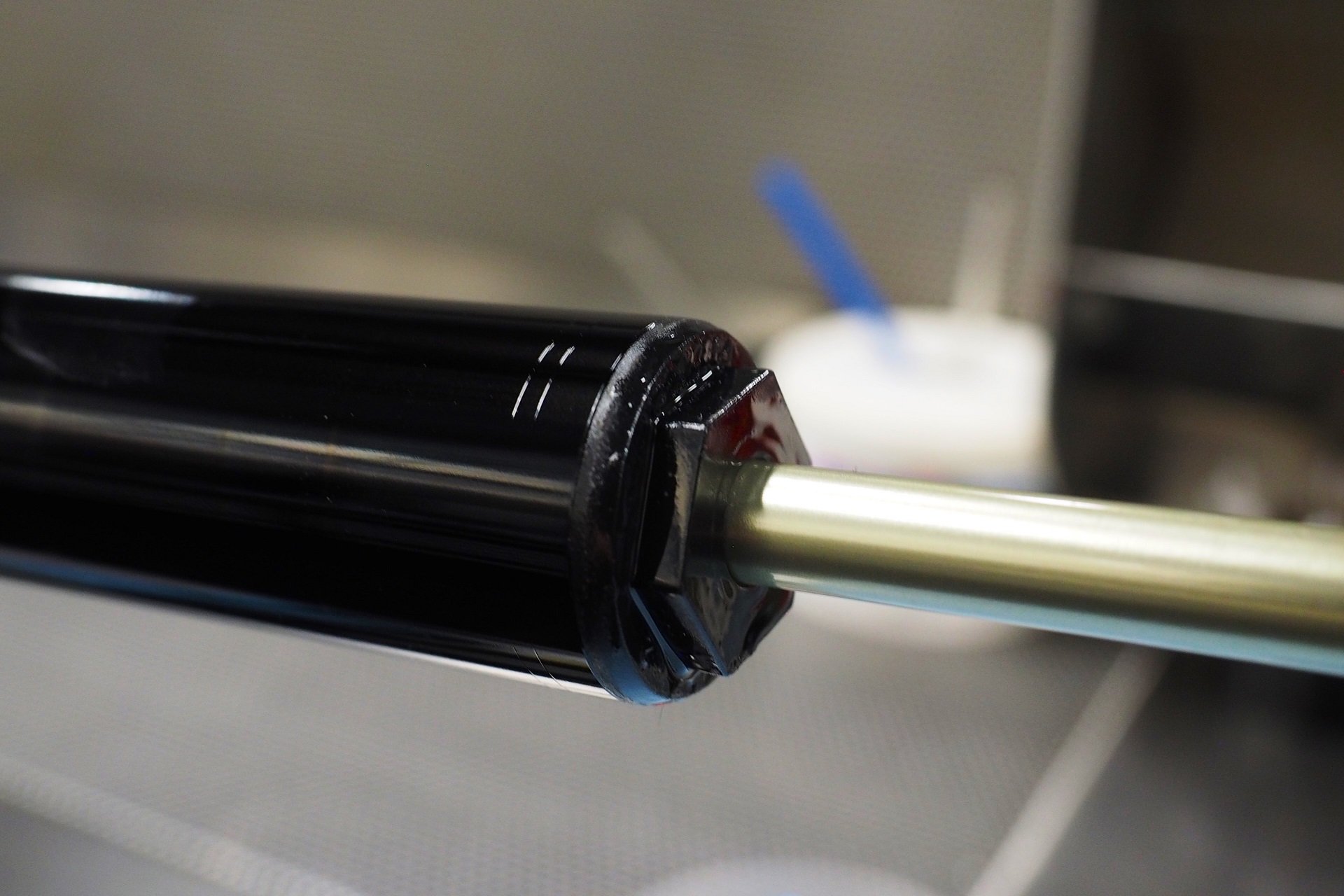
If you are working on your own fork take note of how the air system and damper are gently tightened into the uppers. A proper ham-fisting can flare these lightweight stanchion tubes.
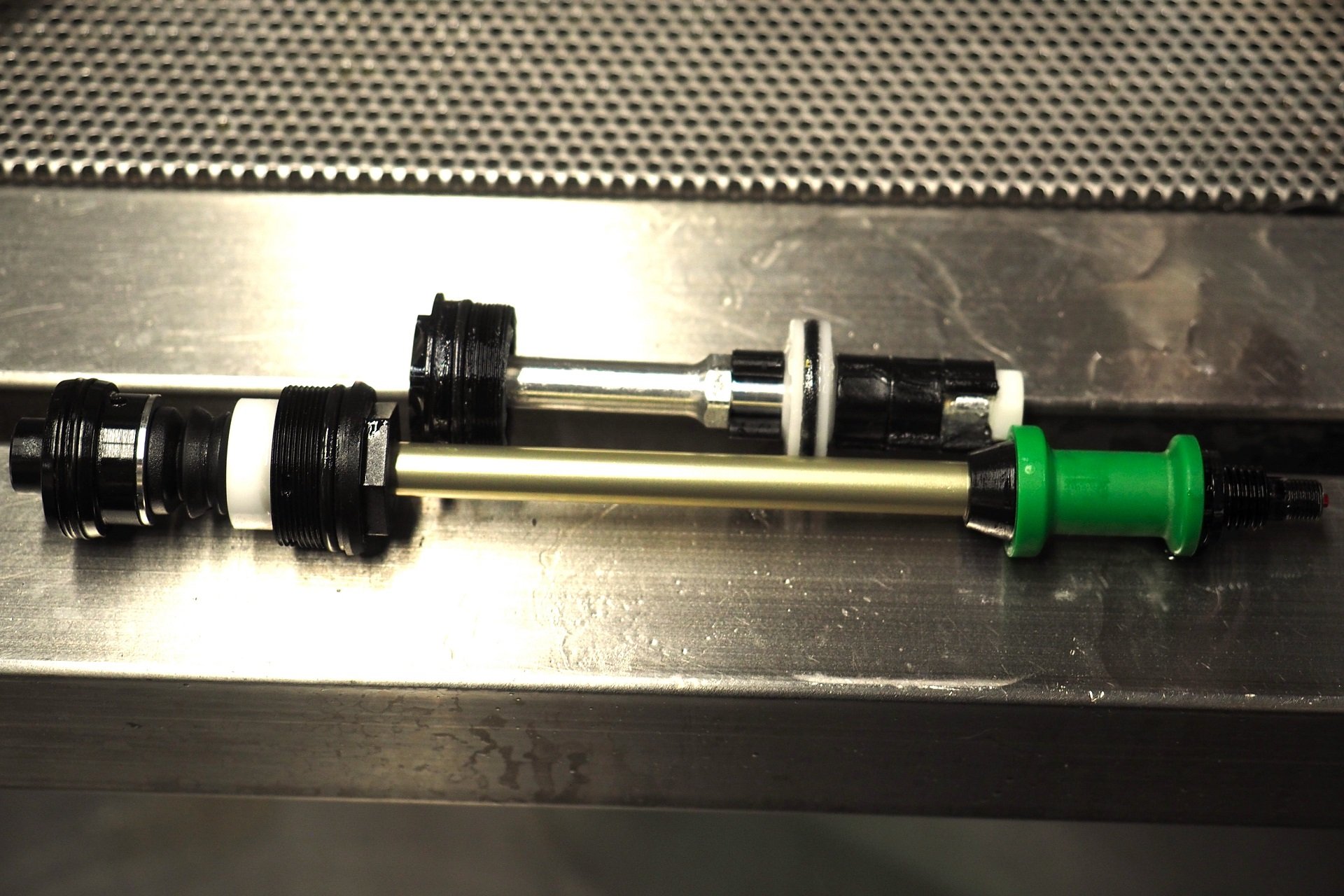
Both sections of the air system are ready to be installed back into the fork. I'll note that I have not played with anything outside of the factory configuration.
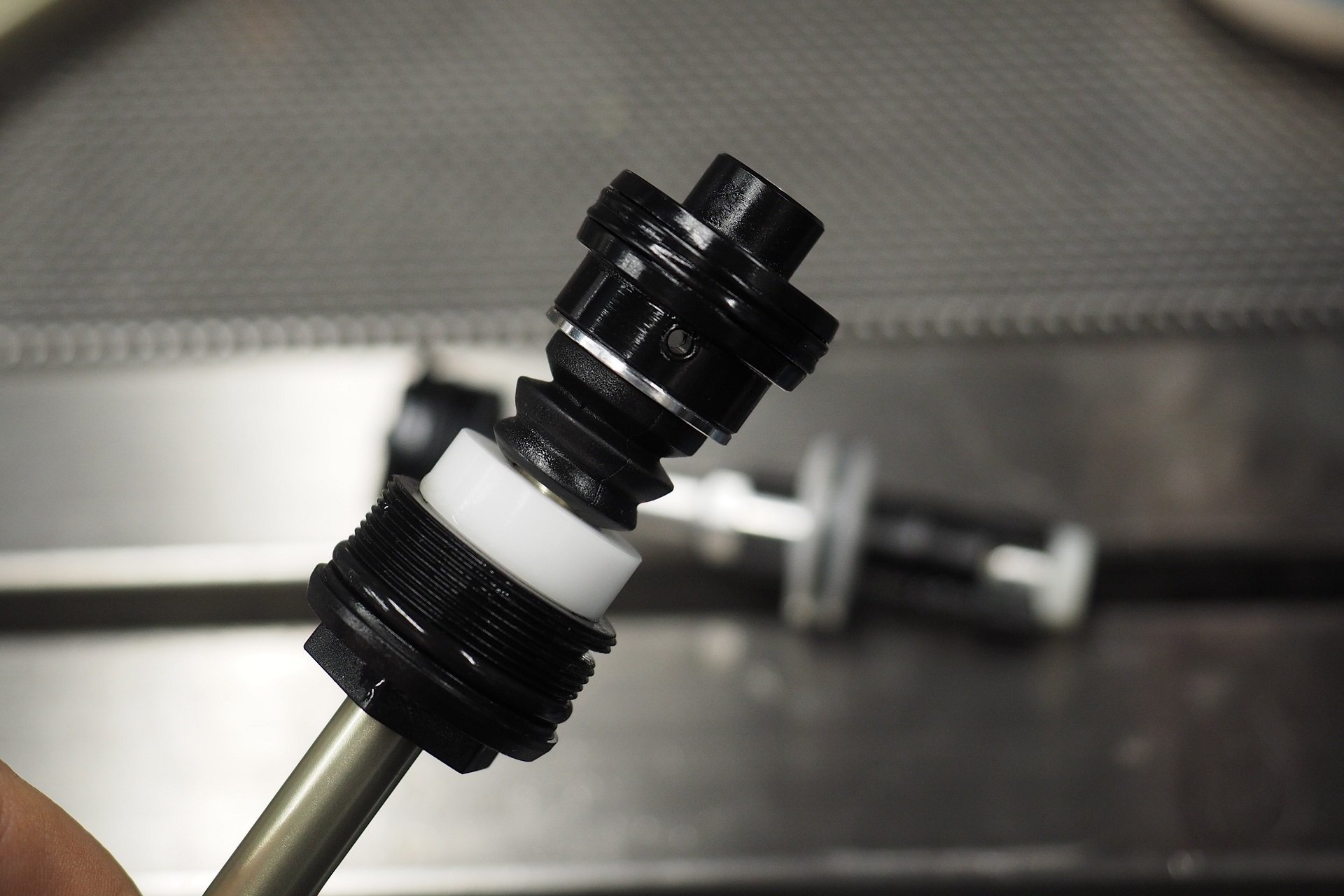
I've only run the R7 in its 120mm configuration but for those that want to decrease travel, the spacer click in above the bumper here.
I like to adjust my air pressure with my bike in a stand or with the front wheel otherwise unweighted - friends are great for this while dialing in setup. This is because the single valve fills both chambers at the same time and the weight of the bike can cause the fork to compress during inflation.
I mentioned at the top that I rode the three-position VTT damper in the open setting all the time with +4-6 clicks of low-speed compression, but I will add that I used the (true) lockout for storage. This was recommended to me since the damper is self bleeding and I store my bike hanging from the front wheel.
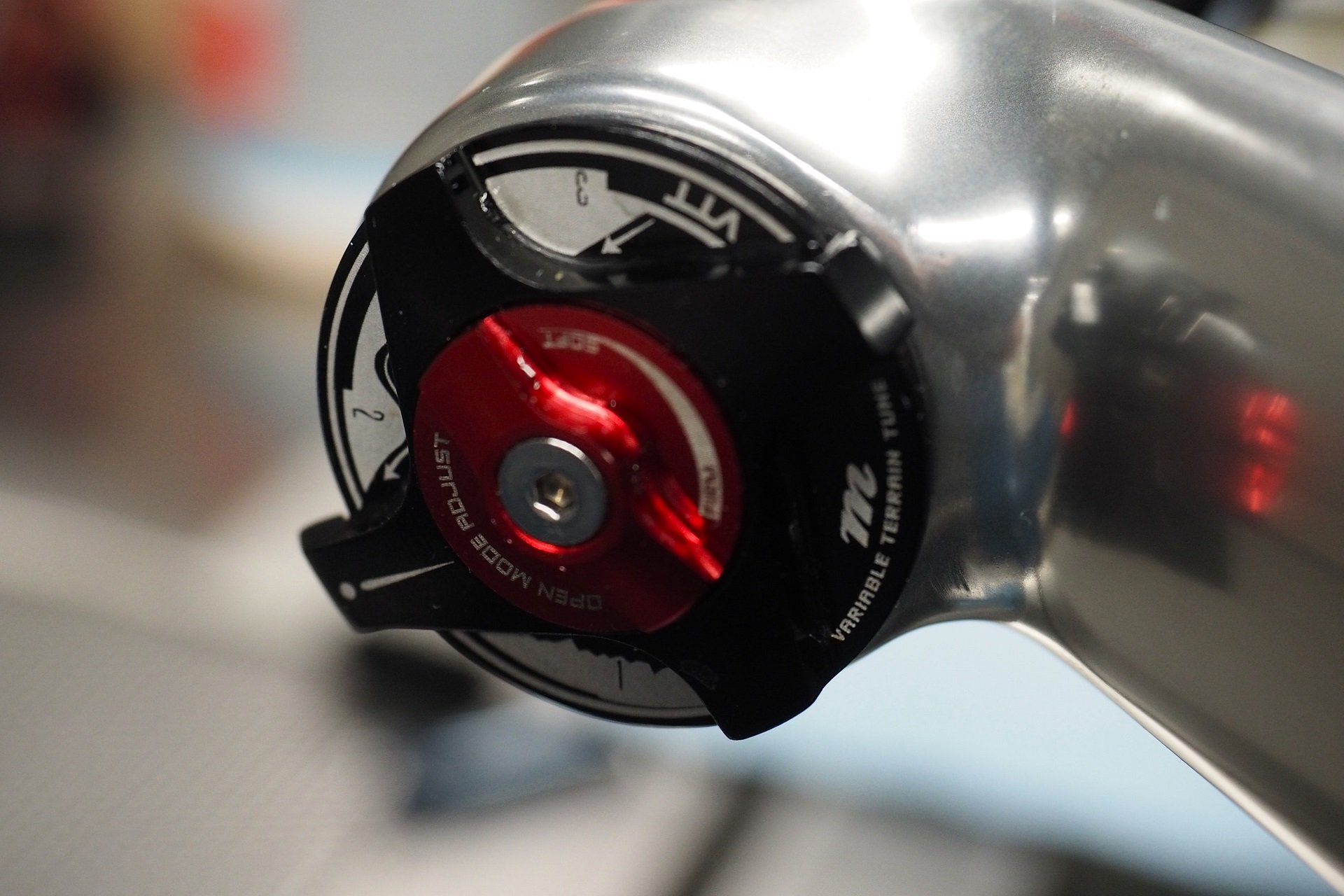
The VTT compression damper has three settings - Open, Trail, and a solid Lock-Out.
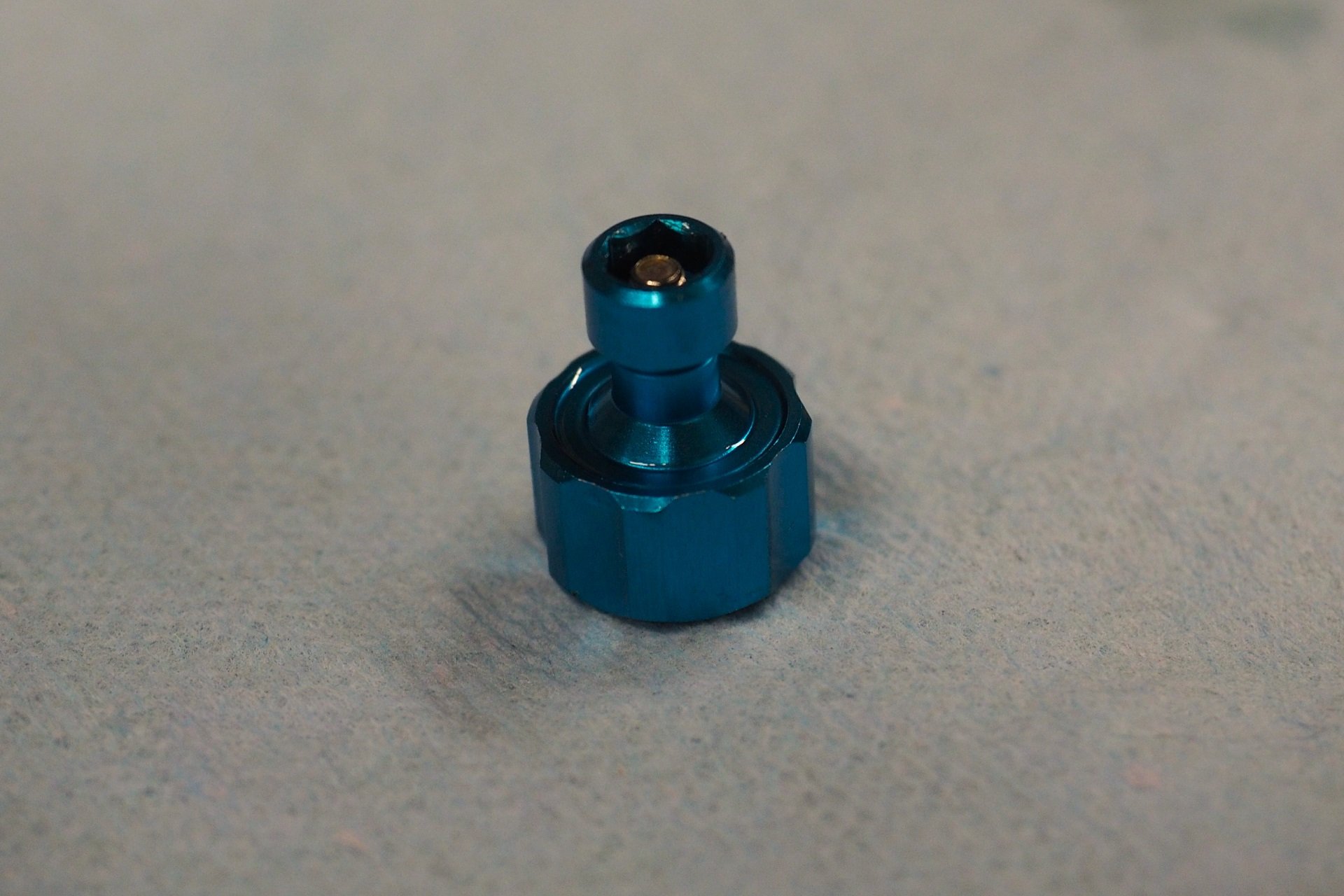
I always chuckle about Manitou's blue rebound knobs. This has been the case forever despite most forks being on the red-means-rebound train.
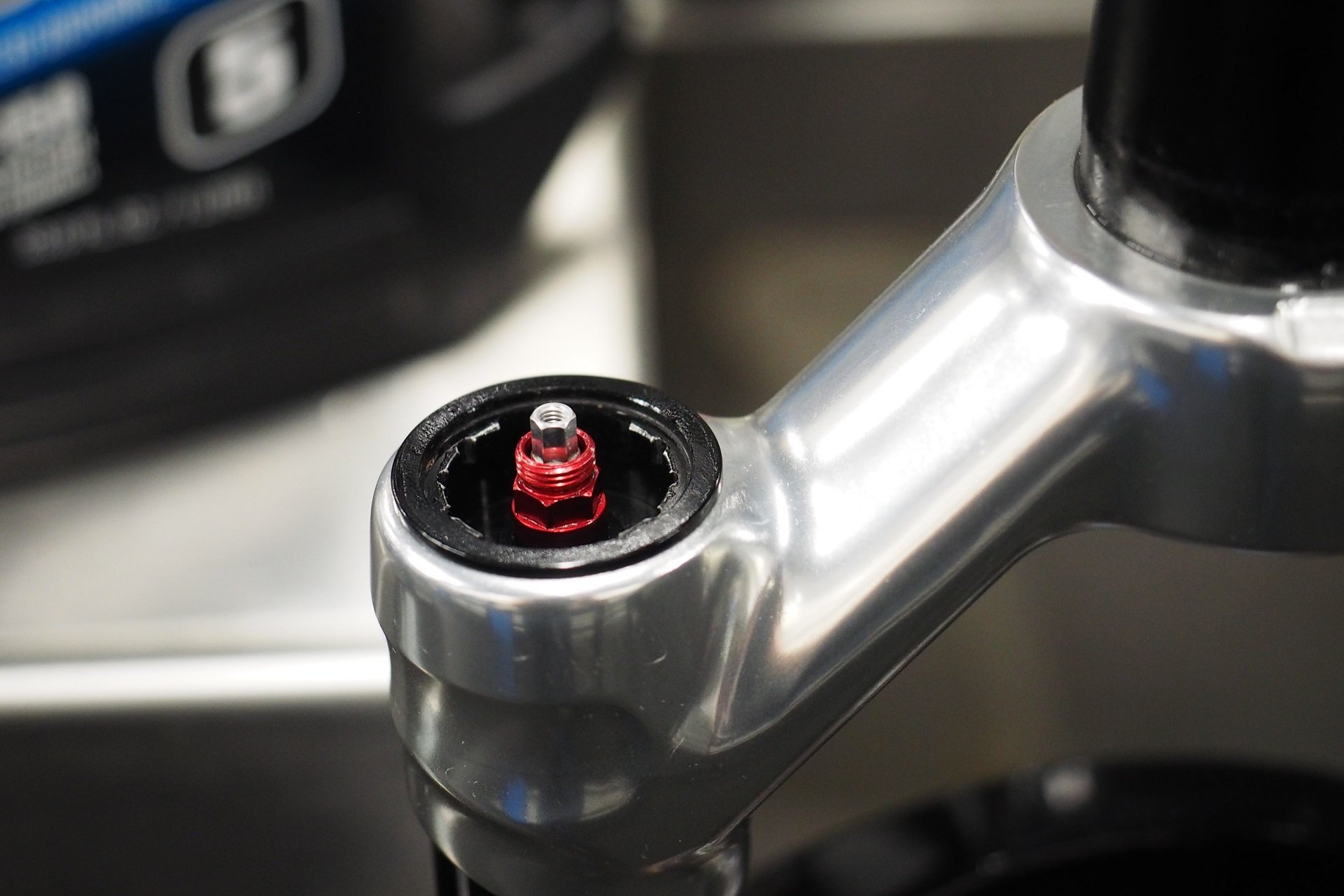
I'd like to see Manitou using an HG tool to remove the top-caps on both sides. The air side currently requires a 24mm flat ground socket.

While the longer travel Mezzer is using a bladder damper, the sealed MC2 unit, the R7 relies on the same self-bleeding foam-separator setup that they've used for years.
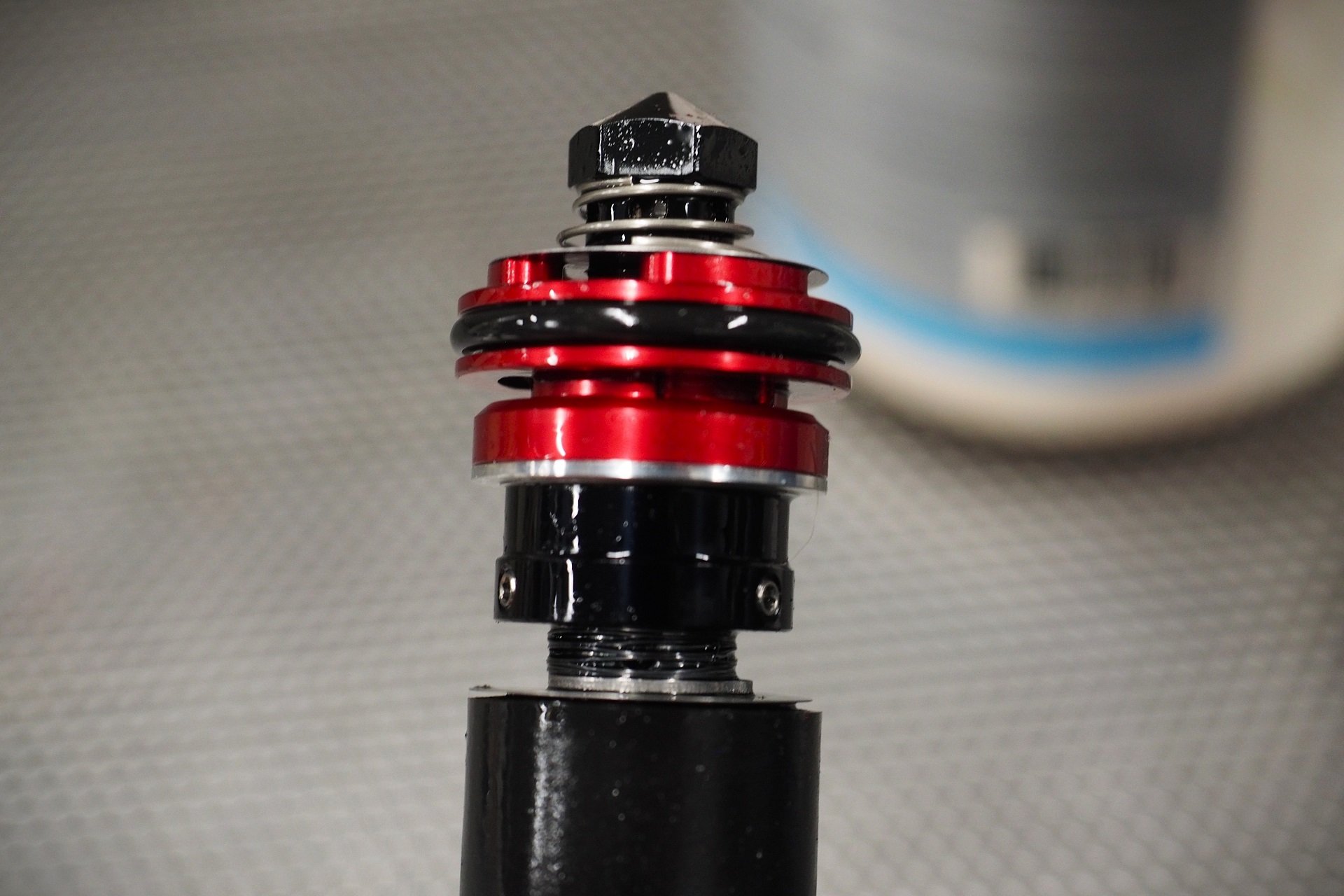
I think it's a great example of not fixing what isn't broken. The R7 has an impressive amount of oil in the damper for an XC fork and is highly tuneable.
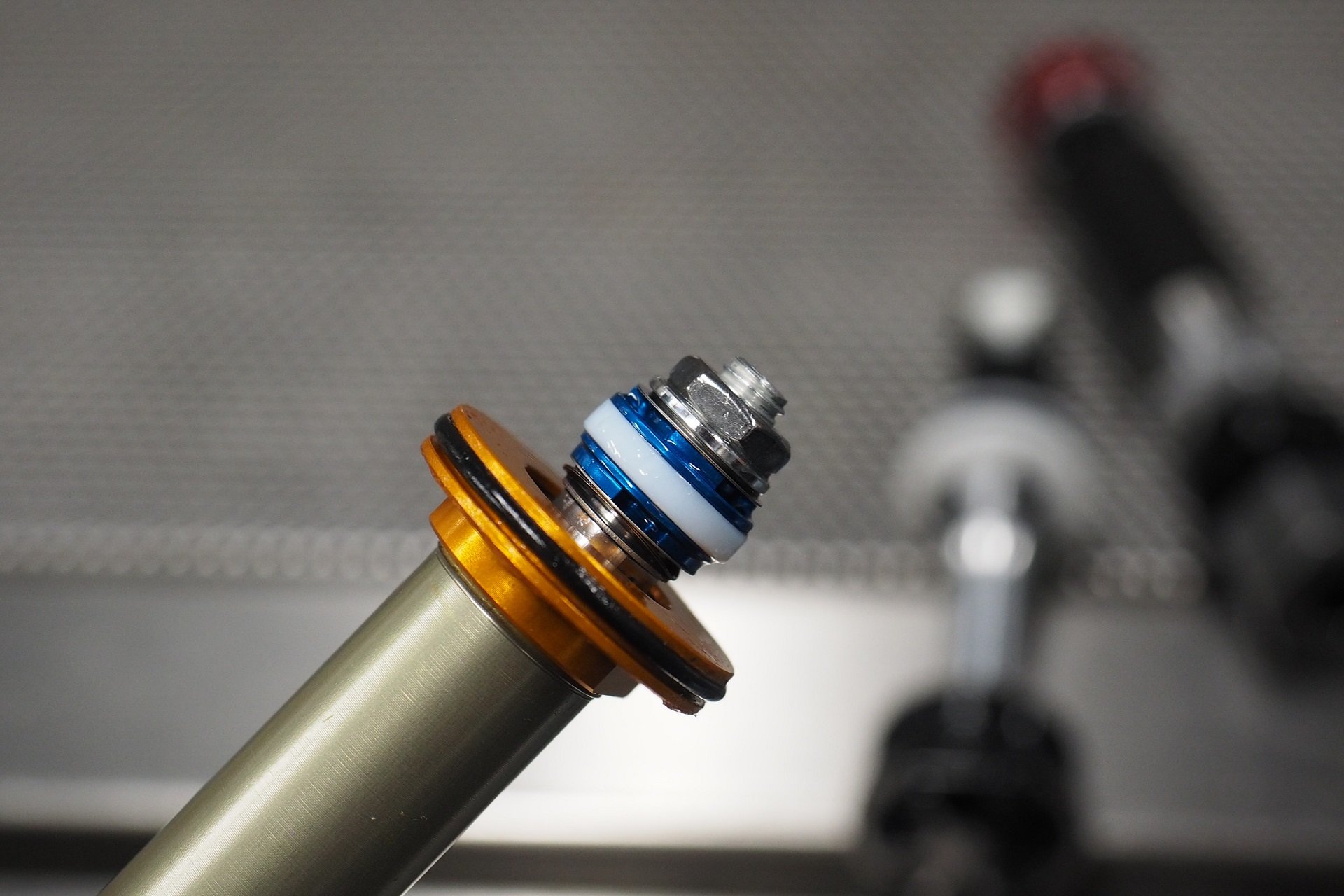
The bottom half of the damper cartridge is the TPC rebound assembly.
Fender & Clearance
Manitou lists the maximum tire width of the R7 Pro as 68mm, which is about 2.7" if you use a special blend of the metric and imperial systems like me. This is true provided you aren't running their fender. As with the Mezzer, I found Manitou's stock fender to be too soft and flexible and I was getting contact with anything larger than a 2.4" DHRII on an i35 rim.
I ended up running a Muddhugger FRX front fender backward - to play nice with the Reverse Arch - and chopping a bit off the, now front, end and this cleared a full-sized 2.5" setup with plenty of room to spare.
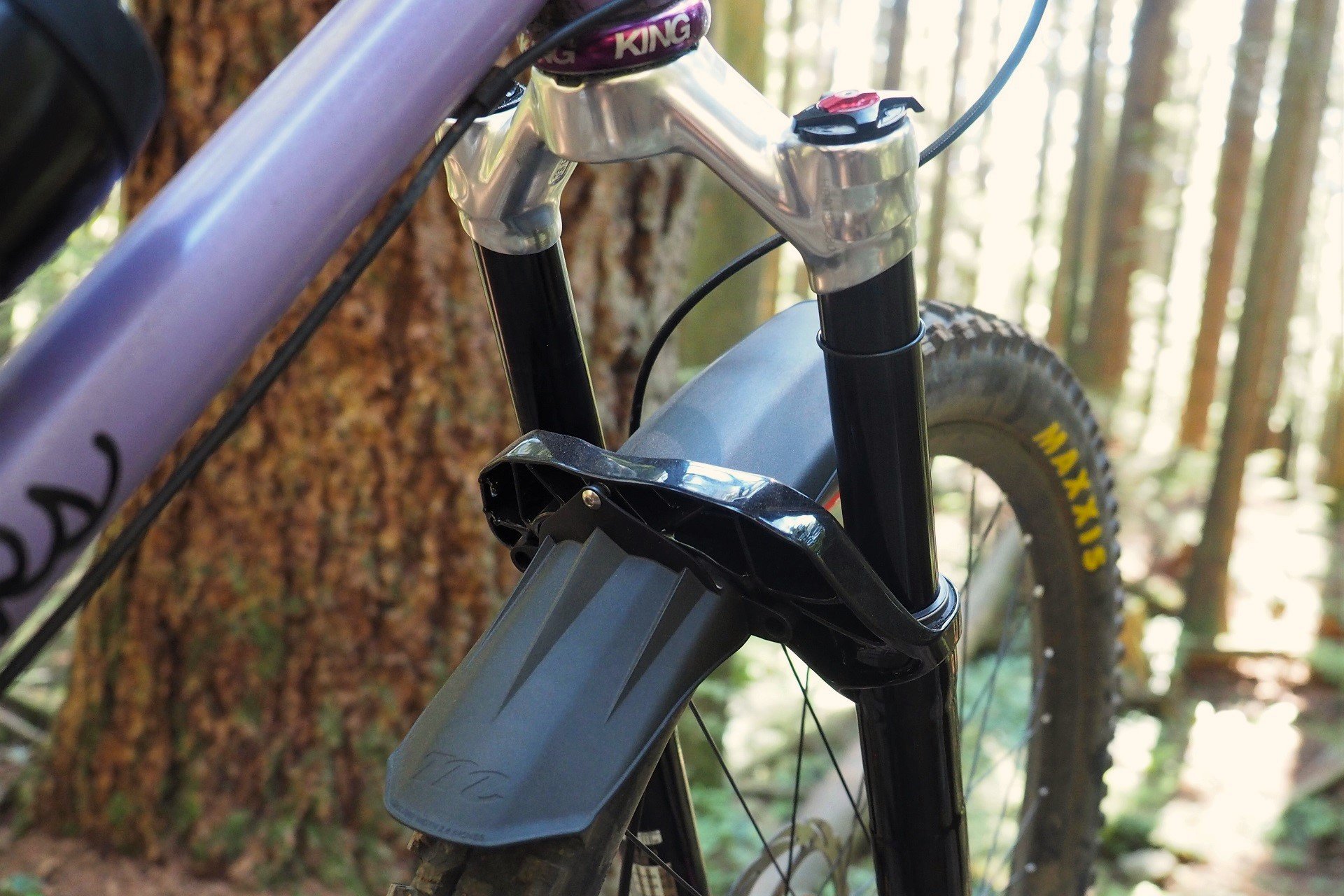
The stock fender looks clean but I find the material is too soft and flexy in terms of tire contact for those that want to run larger than a 2.4" tire. For more XC applications it would be perfect.
My love of Plus tires is well documented, and on both my Waltworks V2 and my Rift Zone I felt inclined to play a bit loose with Manitou's max tire size recommendation by installing my 2.8" WTB Vigilante, on an i40 rim.
I didn't have any issue with normal clearance or contact; however, a few times the aggressive Vigi knobs brought some rock homes, and tossing them out did take its toll on the underside of the arch some. As always, when playing around with frame or fork maximums check your clearance and rubber within it.
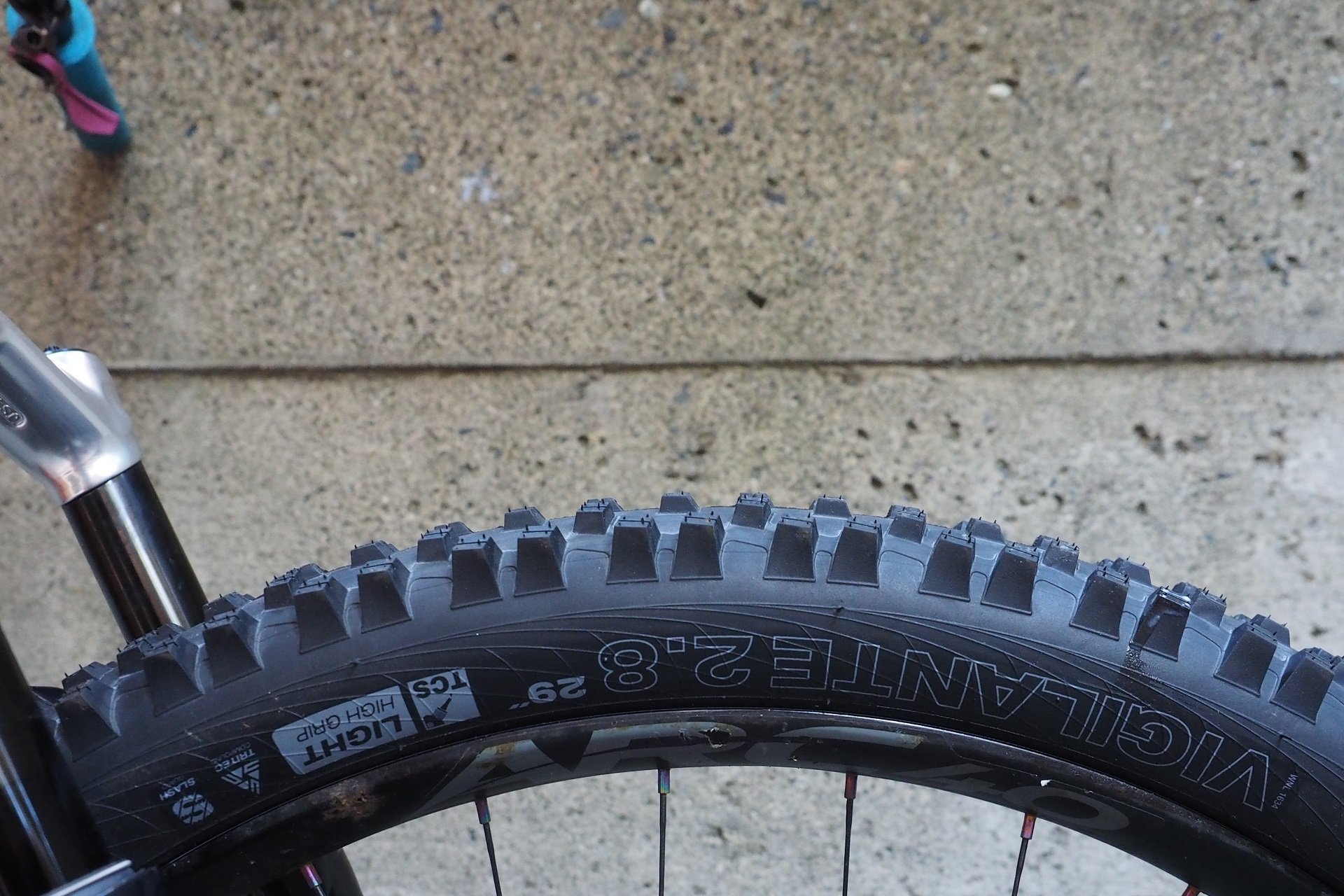
You can't currently buy my favourite front Plus tire anywhere, but here's hoping, again, that WTB makes some more in the near future.
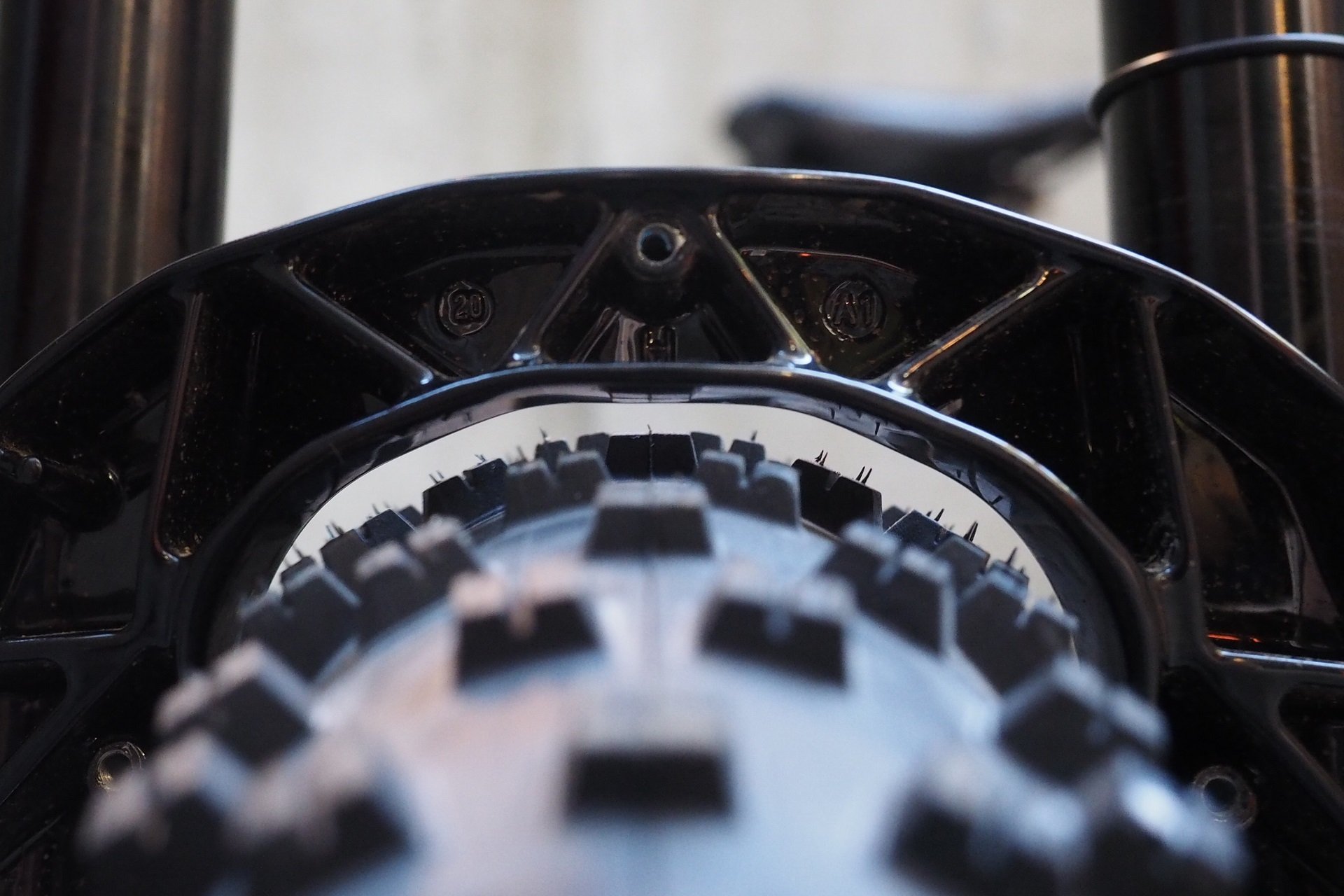
This photo makes clearance look a bit tighter than it actually was, but you get the idea.
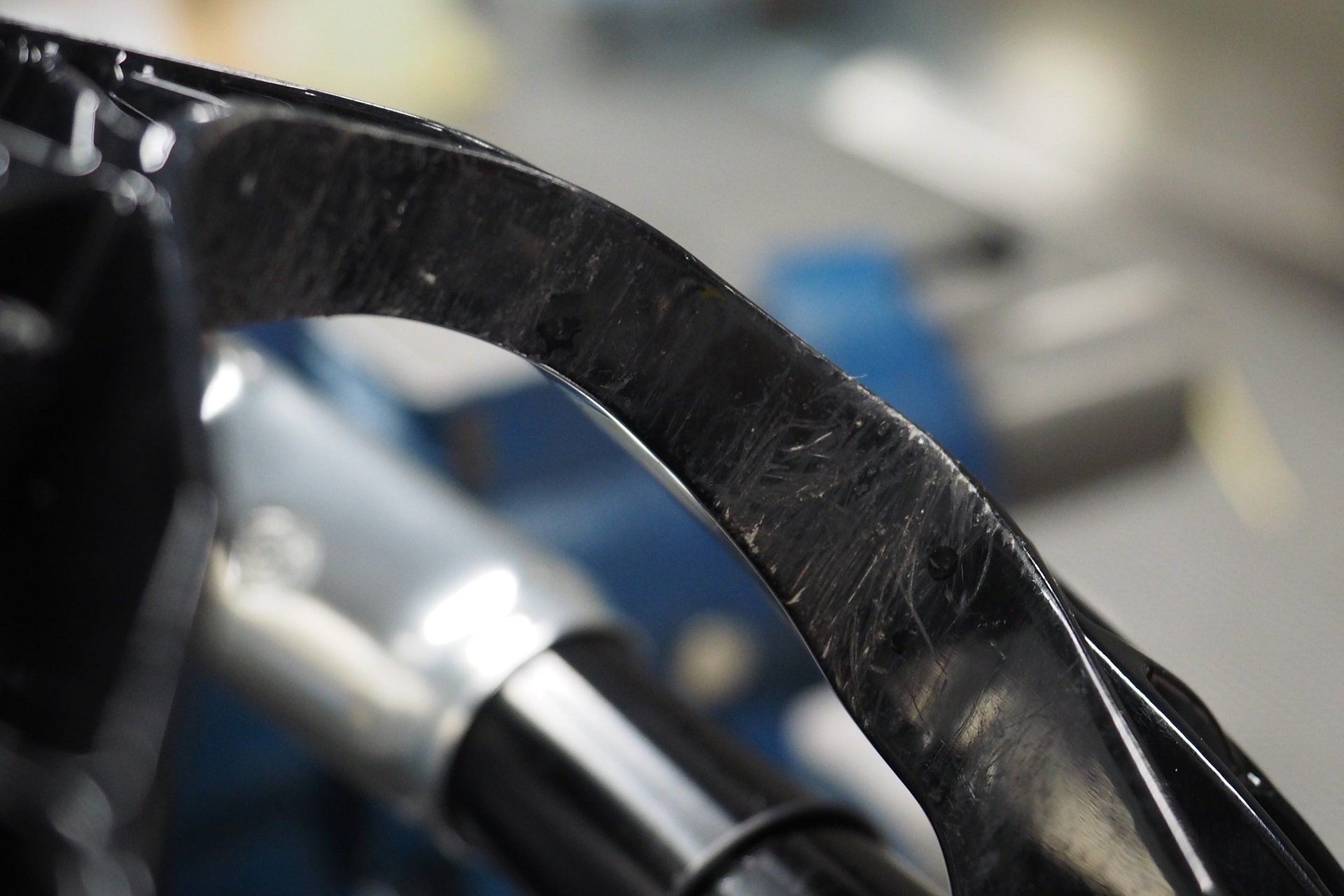
The knobs on the 2.8" Vigi love to carry rocks around to the arch. But it won't clear a tire this large with a fender installed.
Old School Manitou
I mean it in a positive way when I say that the R7 Pro represents a greatest-hits tour of Manitou tech - Reverse Arch, TPC, Hexlock Axle - going back to when it wasn't weird to see 32mm stanchioned forks on trail bikes. The sweet retro graphics go back even further, but for me, this fork pays evolutionary homage to Manitou Nixon that adorned the front of my Balfa 2Step twenty years back.
It's not badass looking like the Dorado or 37mm stanchioned Mezzer. It really does look like a toothpick up against big rubber and fat-tubed frames. But I came to love the underdog appearance, and the performance speaks for itself - the fork is smooth and tuneable, and the chassis is stiff but light.
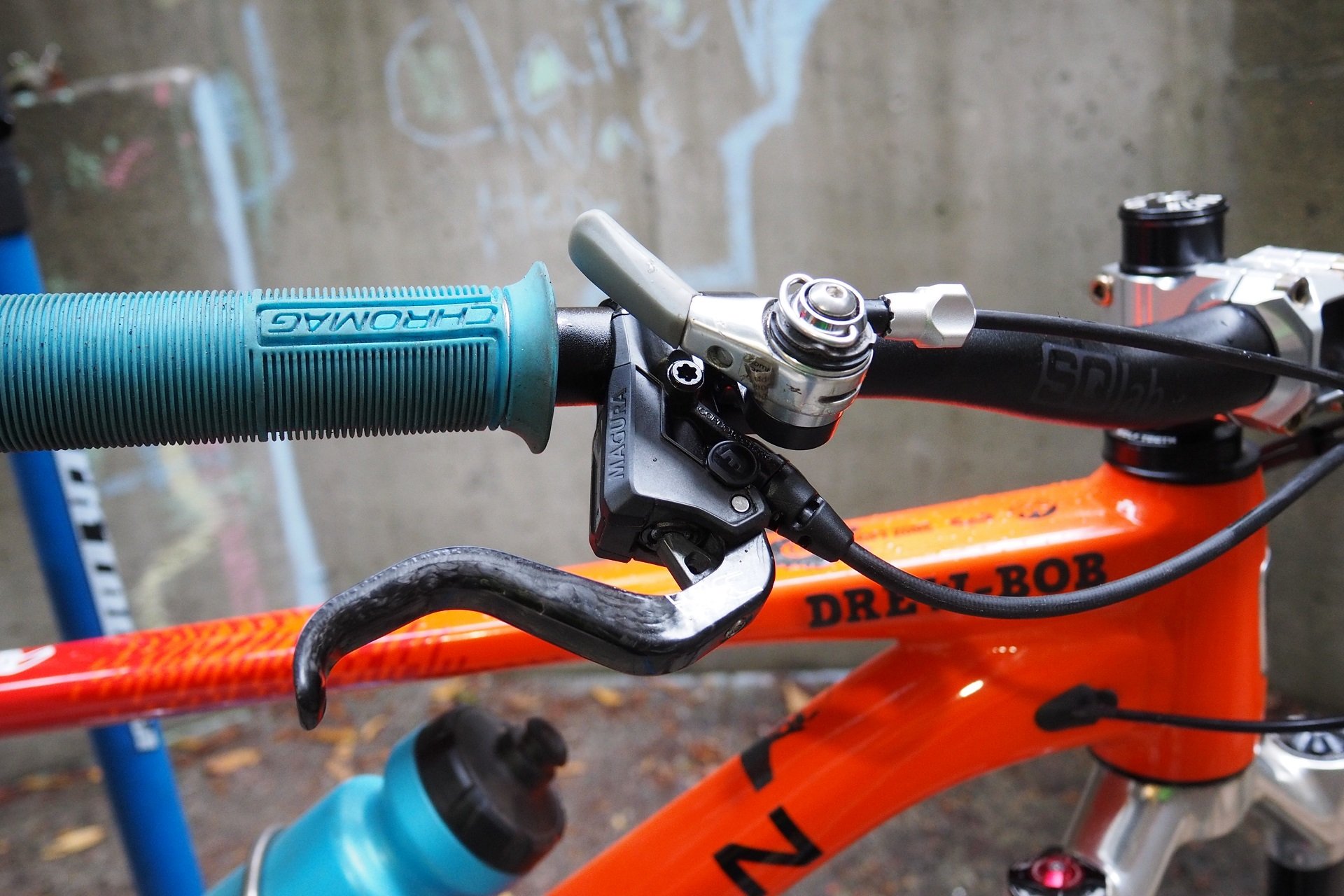
For those following along at home. After going back and forth a few times running an under-the-bar friction-mode shifter setup is the clear winner in my books.
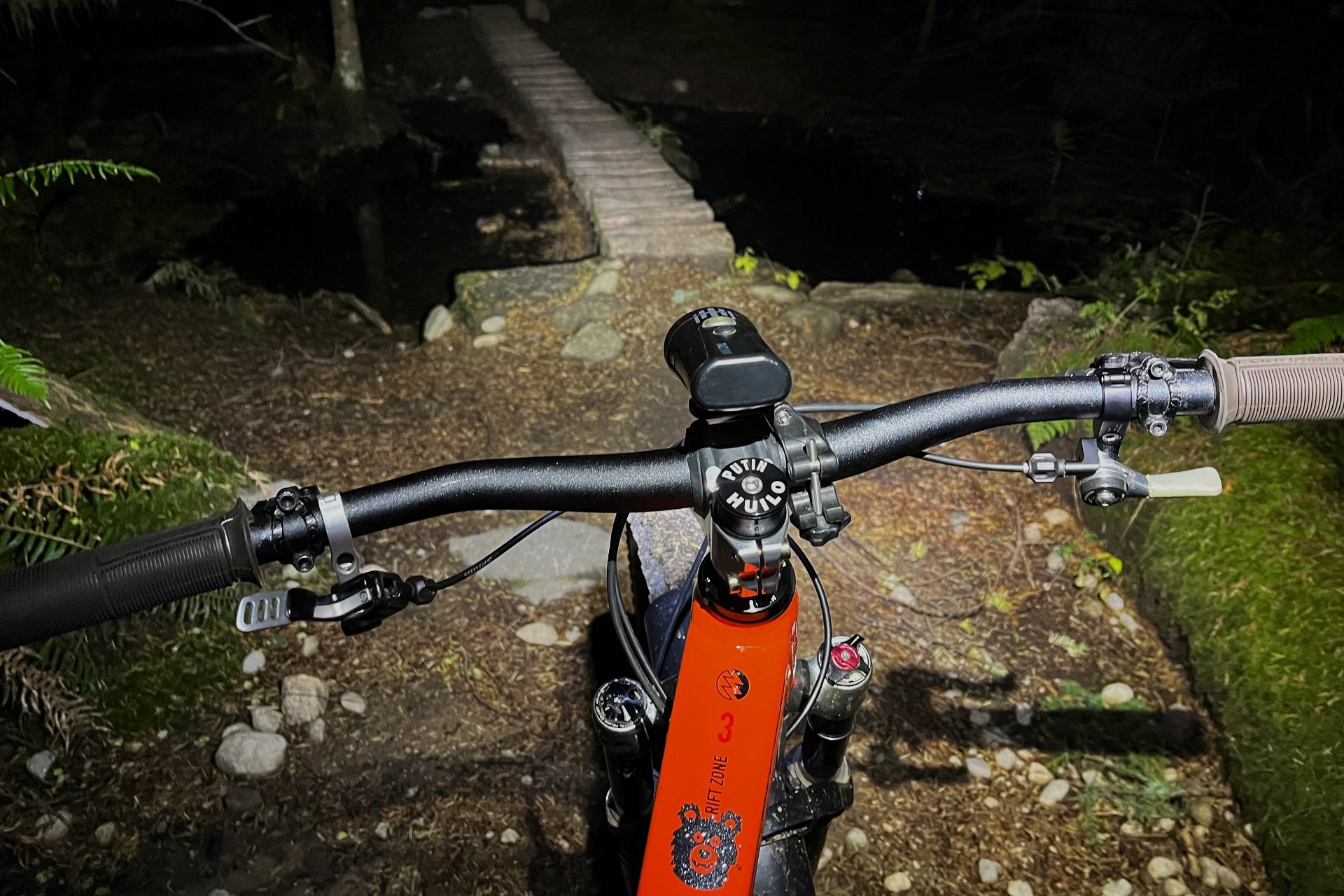
I mention it because I spent more time playing with my shifter setup than the Manitou R7. It was quick to dial in and other than checking air pressure I just rode it.
In a perfect world, I'd have routed the brake line around the back of the fork over the arch as I Manitou used to recommend. I don't love the routing up the front of the fork with the arch being in the rear. But that would have meant a new, longer, front brake line.
The only other minor grump I had through the review period is that I needed to assemble the receiver for the Hexlock and grease it as it was making a heck of a squeal on installation. This is because you're turning a bolt that pulls in the axle, versus tightening in the axle itself.

I don't find any suspension forks - coil or air - work all that great when it gets cold out, but with the LSC adjuster opened up the R7 Pro was smoother and more responsive than most. Photo: JacAttack

I climb out of the saddle on my Rift Zone regularly. Even with CushCore Pro inserts and 2.5" rubber, it's a very playful bike with the R7 and my Cane Creek IL Air shock. Photo: JacAttack
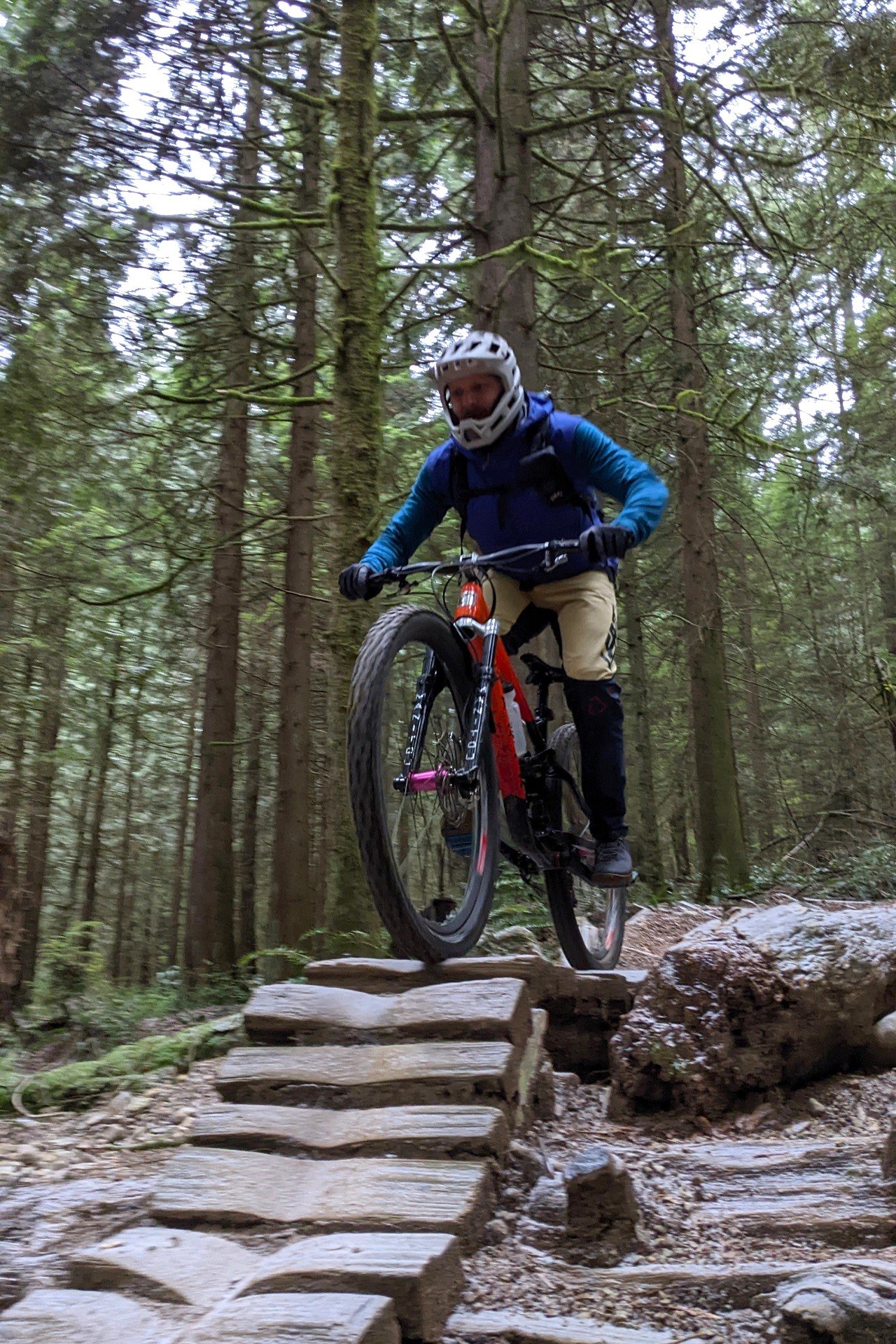
Interestingly, I receive more comments about my full face when riding my full suspension bike than I do on my rigid one-speed. Photo: JacAttack
Would I try a 130 or 140mm, 32mm stanchioned, R7 Pro? Absolutely. It's always interesting to ride the extremes - too stiff, too flexy, too light, too heavy. Would I buy a longer travel R7 Pro? Not for myself, but it's an example of a product missing from current options. Contrary to the more-stiffness-every-year marketing model, there are a lot of more lithe riders out there who will benefit from suspension forks, bars, wheels, and frames that are lighter and more forgiving.
This 120mm R7 Pro is excellent. I never noticed how spindly the fork looks compared to the 35mm, 36mm, 37mm, and 38mm chassis that dominate the local riding scene. I'd recommend it to anyone as a Tech-C fork for a full suspension or hardtail rig, and actually to anyone looking for a 120mm fork in general.
If that's you there's plenty more information as well as tech resources available from Manitou. The R7 Pro sells for an SRP of 980 USD | 1313 CAD. That's competitive with the competition, and I'd boldly suggest this is the better platform. It's very much the magic toothpick.

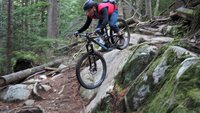



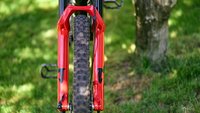





Comments
Wayners
1 year, 5 months ago
These reviews and teardowns are so well done. I don't make a habit of commenting online but you, Andrew Major, regardless of what it is you are dissembling, take such a holistic approach to it. This review is no different. I've never owned a Manitou but if I was in the market for a fork, shock, hell, a used MTB, I would check here and look to see if you had thoughts on it.
I live on the East Coast where MTB is really just picking up relative to the North Shore. I work on my own bike, a 2019 Endorphin that I hope to keep running for awhile yet. Your insight, practical experience and honesty are what brings me to all the articles time and time again. Keep up the good work!
Reply
Andrew Major
1 year, 5 months ago
Thank you very much for the props. And for commenting.
Reply
Kos
1 year, 5 months ago
Cool perspective. I recently went from an older Fox 36 to a new Fox 34 on my trailbike.
Braced for the worst, and.....
I really didn't notice.
Caveat: Getting a bit older, maybe not pushing quite as hard as 5 or so years ago.
Reply
Andrew Major
1 year, 5 months ago
The new 34 is a great riding fork.
I think stiffness wise comparative results are going to depend as much on your system (frame, wheels, bar/stem) as on how hard you’re pushing.
But there are plenty of riders on that fork who are surprised they didn’t feel the need to swap it for a beefier option (even lowered to the same travel).
Reply
mikeynets
1 year, 5 months ago
I know this article wasn't meant to be a comparison, but I'm curious how you'd rate the R7 to both the 34 and the SID. I love that the 34 can have up to 140mm of travel, but if you're pretty confident 120 is all that's needed, the SID and R7 seem pretty compelling.
Reply
Andrew Major
1 year, 5 months ago
I haven't ridden a top-end SID, so it's not a direct comparison to the R7, but based on my experience on the Select+ the Manitou is a better platform both in terms of the air spring performance and the damper. I didn't have any stiffness complaints about the SID chassis though.
In terms of trail use, the SID bladder damper doesn't contain much oil and I'd suspect that you'd get a lot more hours of good performance out of the Manitou TPC/VTT setup.
If I was picking up a RockShox fork for trail use it would definitely be the new Pike, which can be lowered to 120mm. The new damper is excellent and I think worth the extra grams.
Reply
Cr4w
1 year, 5 months ago
> As much as bicycle stiffness is a system, it does raise a question of whether ever-more sophistication and specificity mean a future of manufacturing products like weight-specific handlebars and rims.
Absolutely. How about a universal grading system for those products so you could compare one bar to the next objectively rather than rely on the subjective report of someone who is built differently and rides differently than you? That way a 150lb person or a 240lb person could make sense of how the stiffness of a RF NextR versus SixC compares to a OneUp. I was trying to figure this one and I actually emailed Oneup and I swear I could hear them snickering, as if there's no appreciable difference.
Reply
Andrew Major
1 year, 5 months ago
So many (premium) companies are using the Zedler end of life test now, that they seem to me to be the best candidate for a neutral, relative, stiffness rating. I’d like to see uncut numbers and also a rating at each cut-point the companies provide. Since so many companies don’t produce narrower bars anymore, it would be helpful to have an idea of how bars compare when chopped.
A lot of folks claim they don’t notice the difference from one bar to another. Maybe I’m a wuss, maybe it’s all the rigid riding I do, but wow there are some obviously stiff pipes out there. Which may be great for a bigger rider, or a rider pushing their limits but it would be really nice to have a comparison, especially at the price of high-end carbon bars.
Reply
Andrew Major
1 year, 5 months ago
The interesting thing with the OneUp bar us it’s not universally compliant like say a 31.8 Renthal bar or 30X. It actually matters how the bar is positioned.
So, for example when you read someone saying they don’t notice a difference between a OneUp bar and a We Are One bar (which I find very stiff) it could be that there isn’t one at the angle at which they prefer their OneUp bar setup.
It would be interesting to see how different the flexibility is on a graph, but there are plenty of folks who don’t run their OneUp as recommended.
I’d bet a 6-pack that you would notice the OneUp vs. RF difference. Not in a mind-blowing 60-second descent way but certainly at the end of a long ride. Like ButterCups.
Reply
Briain
1 year, 5 months ago
Love the detail of your reviews. But because I suffer a lot of hand pain. I've gone down the rabbit hole of every grip and handlebar combo I could get my hands on. The positioning of the bars is crucial. My current favorite setup is a 30x bar with chromag wax grips although I think the oneup and rf sixc bars are more compliant then the 30x bars the back sweep makes all the difference for me.
Reply
Andrew Major
1 year, 5 months ago
I’m surprised to hear that comparison re. 30X vs. SixC. If I push on my 45mm rise 31.8 SQLab vs. a 35mm clamp SixC bar I can see the difference in flex, and I certainly find the SixC to be one of the stiffer bars on the market. That’s not good or bad, but I generally find myself recommending along with the Chromag BZA to folks looking for the stiffest front end.
That’s the human animal for you though. Glad to hear your experiments with backsweep have served you well.
Have you tried any of the thick silicone grips like Wolf Tooth’s? I have friends with bad hand cramping who swear by them, but they’re too thick for my mitts.
Reply
Briain
1 year, 5 months ago
I haven't tried the wolf tooth grips yet but might be the option for next time, Rulzman suspension on YouTube is a huge Manitou fan but his favourite grips are a progrip atv grip which If I could find anywere where the shipping was less than the costs of the grips I'd buy them. The main thing I've realised is that lock on grips don't really work for me. In terms of flex on bars I'm 115kg and I really weight the front end of a bike so I probably flex bars a bit more. The stiffest carbon bars I've tried has been the nukeproof horizon bars, but as I've said I think the shape and sweep affect compliance more than material or diameter. Having said that I would like to try the the 30x carbon bar it's just a bit expensive
Reply
Andrew Major
1 year, 5 months ago
With rare exceptions for shorter-term test bikes, I'm fully on the push-on grip program for the added rubber for a given thickness. I haven't heard of those ATV grips but I'll have to keep my eyes open.
Cr4w
1 year, 5 months ago
That's curious. I found the Next R more compliant than the SixC (both in 35mm clamp). the 12' 30x SQlab carbon bar in 31.8 is way more comfortable than the SixC and probably on par with the NextR compliance-wise though the extra backsweep makes the 30x by far my favourite.
Reply
Brian Tuulos
1 year, 5 months ago
This comment has been removed.
Brian Tuulos
1 year, 5 months ago
@CR4W As a manufacturer, having weight-specific handlebars would be a liability. Is the world really a better place if a 150lb rider can ride a handlebar that's 50g lighter. Then he eventually sells the bike and it ends up in the hands of a 250lb rider. Handlebar snaps and he's in a wheelchair. All for 50g.
Love my mezzer BTW.
Reply
Andrew Major
1 year, 5 months ago
Brian, in general I wasn’t thinking the products would be lighter weight but rather that the flex profiles would be tuned to be more forgiving so a lighter rider would have the same net experience as a heavier rider.
Maybe a better way to think of it is having stiffness rankings and then a recommended rider weight the way we do air pressure spring rate charts. You can run a softer or firmer rate but here’s what is recommended.
Likewise with a longer travel R7, I wasn’t thinking it would explode if a 200lb rider was on it, just, like the example of the old 150mm travel Fox 32, it would kind of suck for a heavier rider.
Reply
Cr4w
1 year, 5 months ago
I didn't say weight-specific handlebar. I said it would be nice if there was an objective system to compare compliance between models and brands. So you could compare relative flex of a RF to a Oneup to a Chromag bar in either material. You could extrapolate from that number that the bar would get even less compliant the more you cut the bar down. That way after spending some time on a RF Next R carbon that's a #8, you'd have a good idea of what to expect from a SixC that's a #9 or a Oneup that's a #7 or whatever. There is no objective way to do that currently just anecdotal suggestions.
Reply
Ripbro
1 year, 5 months ago
I thought DVO forks were easy to work on, then I bought a Mezzer pro. Easiest fork by far. No need to hit bolts to drop the lowers, cassette tool instead of flat ground sockets to access the air spring and damper. DIY 2 syringe bleed kinda sucks but oh well. Seals are also apparently long lasting. IMO it’s the best looking fork going.
I also ditched the fender. It was always making noise and the reverse arch keeps a lot of dirt at bay.
Forks like the Mezzer take some time to get tuned right. A second positive air chamber is another variable, but it’s really cool how you can change how the fork feels (for better or worse). I found a good digital pump really helped as changes of a few psi can feel different. Love it and hope to have it for years. Also like that I can screw around with different amounts of travel without having to buy a new air spring.
Manitou seems like a brand that puts money into engineering instead of marketing. However it’s fun riding something different than everyone else.
Reply
Andrew Major
1 year, 5 months ago
When I’m recommending the Mezzer I can’t overstate that the key is to take some time to play with the IRT setup and understand how it affects performance. The fork is excellent when it’s setup well, but it’s not for some folks.
Reply
lewis collins
1 year, 5 months ago
Would love to see a modern fork like this come on a 1 1/8 straight steerer option for all the dependable old 29er frames out there. I reckon they would clean up
Reply
Offrhodes42
1 year, 5 months ago
I second this. My X-Fusion Slide on my older SIR 9 is getting old and the only option to replace is a rigid fork or a very low end fork. I want medium to high end forks available with 1 1/8" steerer tubes. I know that is only a dream though.
Reply
Andrew Major
1 year, 5 months ago
Here’s Save Us SRAM from 2018. We still have the Chromag frame. Thinking of having the headtube cut off a replaced with a 44mm (and slacked out at the same time).
The 2012 Fox 32 is in my daughter’s bike, which I have been told is criminal since it can take a tapered steerer.
There’s a market still there for a good 1-1/8” fork. One SKU of 29’er like the R7 (or even the Manitou Machete) and one SKU of 27” fork with up to 150mm travel to cover old 26” bikes. I guess not enough guaranteed units for it to be worth someone’s while to support.
Reply
Velocipedestrian
1 year, 5 months ago
Dougal from Shockcraft has a pile of NOS Manitou parts. He offers a Custom fork service to suit your wheelsize, axle and steerer dimensions.
It's not going to save many riders, but it's nice that it's there.
Reply
Andrew Major
1 year, 5 months ago
That’s cool! Thanks for the link.
Reply
BadNudes
1 year, 5 months ago
Just came here to see where you're running your thumbies these days. Under-the-bar for the win.
Stayed for the thoughtful and thorough review. Always appreciated, Andrew. I feel you really set the standard for gear reviews, great mix of technical info and personal flair.
Reply
Andrew Major
1 year, 5 months ago
Hahahaha. Under the bar for the win, yes.
It’s funny (to me) how often I get accused of writing about this, or that, just to get into conversations about rigid forks, single-speeding, or friction thumb shifters. I deny these claims unequivocally, and also thank you for your comment.
Reply
Lu Kz
1 year, 5 months ago
System stiffness is such an interesting concept, and I totally get it. I first remember it entering my head reading an interview with Formula's head suspension engineer.
I've experienced it myself a few times. Once, with my Aurum. I briefly replaced the Boxxer with a Fox 40 (back when Fox had a good staff program), only to find the overall system stiffness far too much for my liking - the stiff, lots-of-carbon-triangles Aurum frame, vibrocore wheels, WITH the 40 was too harsh, regardless of setting. Back to the boxxer. It wasn't just chatter too, it was so stiff it was a bit jarring and the bike felt unsettled in the corners - but this could be related to be just not being used to the different system.
Experienced it again in a less dramatic manner switching between the Optic and the Instict - both really similar bikes on paper, especially given my Instinct is under-shocked to bring it to about the same rear travel as the Optic. On the Optic, I preferred the bike with a Fox 34 for a trail bike. The instinct, with a nearly identical build kit, felt under-gunned with the 34 and oh-so-right with my old 36 dropped to 140mm.
The last time I gave a 32mm stanchion any serious shot was on a 2014 fuel ex. I remember that bike fondly and got along fine with the fork (although I do recall it being kinda spooky when I caught a glance of it flexing down the trail). The Manitou has substantially different construction to a 2014 Fox 32 noodle. It's not a fork I'll ever likely demo, and at 100 kilos I'm not about to take a leap of faith for one. I guess it doesn't help that I don't have a bike I'd fancy less than 140mm travel on.
PS - remember when the Fox 32 came in 150mm travel? And the original Revelation which could be found all the way up to 160mm? Madness I tell you. Madness.
Edit: Regarding your note on swapping between the bigger stanchioned fellows - When I had my 2021 Range I briefly ran it with the same Fox 36 noted above at 170mm when the Zeb went in for a quick warranty service. I couldn't tell a damn lick of difference in stiffness, if I was 100% hones, which may add evidence to invalidate some of the above. Oh well. But I generally didn't get on with that bike.
Reply
Andrew Major
1 year, 5 months ago
As to the 150mm 32 Float - which certainly didn't have the chassis stiffness of this R7 Pro, even with the 15mm axle setup - it was a silly fork to see on the front of an XL frame-sized 6" travel bike, but I know a bunch of lighter riders who had fantastic experiences with those forks. Especially the FIT RLC variety.
It is exactly the sort of platform, as is the 140mm Revelation, that makes me think the market for a longer travel R7 exists.
------
I remember there being quite a bit of talk when the SCB Syndicate switched from the Boxxer to the Fox 40 (original format) in 2012 that the Fox 40 was much too stiff, and that's where the current chassis, which was designed to be much more forgiving, came from.
------
Makes sense with the Instinct given it's a short-shocked Enduro bike where the Optic is a dedicated platform. Not saying in any way that either is good or bad, but the current Altitude is built around a 38mm platform (Fox 38 or Zeb) so in terms of system stiffness the lowered Fox 36 is going to feel more similar.
Reply
Lu Kz
1 year, 5 months ago
My instinct is a 2018 with an angleset! So actually less sturdy than the optic, haha! Ballpark 140 front, less rear.
Likewise my 40 was a 2019 or 2020 - but certainly the same feedback would apply to the even more stiff 2012 version.
Reply
Andrew Major
1 year, 5 months ago
That is interesting regarding your Instinct. What do you think it is about the bike that makes it better with the 36?
Reply
Lu Kz
1 year, 5 months ago
Well this is a full-on mini review style question here, Andrew. The short version is that the Instinct isn't a particularly sturdy platform for a 100 kilo person and the 36 just brought the entire system stiffness to an appropriate level.
The actual comparison:
The Optic is a sturdier platform than the gen 2 Instinct, and the total system stiffness was acceptable with the lighter fork for the riding I was doing. The Optic would justify a 36 over a 34 for a lot of riders, but I've always had multiple bikes and at the time I had two bikes filling out categories burlier than the Optic. I had my Optic and Instinct frames simultaneously, and when I was deciding which to keep, I spent a few months on each to help make that decision. Parts ownership/availability meant they couldn't be built up completely at the same time, but I had them both built a few times in similar points in time that I was able to make an adequate comparison.
I thought they were both fun in their category. The Optic was in total a little more confidence inspiring, with its slightly longer, slacker, geometry, system stiffness and the way it moved through its travel. It really feels like a bigger bike than it is, until you run out travel from doing something stupid. The shock likes to hug the ground when its supposed to while being be poppy and playful when you want it to. The downside to this balance are the aforementioned encouragement to bottom out the rear of the bike (adding more air pressure takes away from the balance and the shock came maxed out for volume reducers from the factory), and the fact that it actually had quite a bit of pedal bob - despite what Norco claims.
There's also the classic sturdiness tradeoff here (like all of Norco's most modern bikes): stiff, reliable platform, heavy frame. When I swapped my parts from an old bike (a carbon stache) onto the Optic, the total build went from 26 lbs to 31.5 lbs. I know that's carbon hardtail territory to half-carbon, DH-shock full suspension bike, but 5.5 pounds is pretty wild. That's nearly an entire Gen 5 Carbon Fuel Ex frame included somewhere, for reference.
The Instinct (with an angleset and a bit down on rear travel) is just a joy to ride. It's not quite as confident as the Optic, but it's more playful, easier to manual and throw around due to the fact its a bit smaller everywhere, and the suspension platform pedals a LOT better, at least for a heavy pedal masher like myself. Actually no lockout required this time (I think its funny that Norco has been on the "you don't get a lockout even if you want one, our bikes pedal amazing open and its totally unnecessary" train, and Rocky's bikes have pedaled fantastic across the size/weight range and they usually include a lockout anyway). I did feel a bit down on confidence on the Instinct, even with the back of the bike dialed and the angleset in. As a whole, the bike is closer to what I would want a 140/12X bike to be. The 36 helped the front end confidence just enough that the Instinct takes the cake overall.
The Optic yearns to be a bigger bike. The Instinct is happy right where it is (and you can make it a 160mm bike if you want anyway).
Reply
Andrew Major
1 year, 5 months ago
Cheers! Interesting conclusion, as I was having the same conversation with a friend the other day who is looking at bikes in the 120-130mm category. It's remarkable how some 5" bikes fit the bill but some, whether down to geometry, weight, kinematics, etc, want to be 7" bikes.
alhoff
1 year, 5 months ago
Finally :)
Reply
Andrew Major
1 year, 5 months ago
Hopefully worth the wait; certainly worth the weight :-).
Please do let me know if there are any questions. It’s always a battle to say everything and keep these pieces a reasonable size.
Reply
mrbrett
1 year, 5 months ago
After years on RS and Fox, I bought a Mastodon Pro for my fatbike. It's similar tech to this fork, and I have been so impressed with how well it works. The air system is very adjustable, damping just right. I even got a good Dorado setup tip from Andrew about making the front of the bike unweighted to inflate the fork. Much appreciated info in articles like this.
Reply
Andrew Major
1 year, 5 months ago
A funny note about relative stiffness, when the 34mm Mastodon was released it was the stiffest fork Manitou had in production. I don't have much cause for a Fatbike, which I find sad now that they A) aren't trendy and B) there are some interesting modern-geo options coming around (Rocky Mountain - very cool) but I'm a nerd so I've chatted to a fair few folks about them, and the Mastodon is apparently the best suspension fork by a large margin.
Cheers!
Reply
Suns_PSD
1 year, 5 months ago
Well written review.
I enjoy Manitou products and 2 forks and 2 shocks from them and am pretty happy.
I do wish the R7 went to 125-130mm travel however.
Reply
Andrew Major
1 year, 5 months ago
I’m stoked on the idea of an R7 Long-Travel with 120-140mm (150mm?) for riders that want a light XC/Trail fork with more travel or even as an enduro fork for light riders and kids.
Reply
upandown
1 year, 5 months ago
Good review, as usual.
Love the top-cap, Slava Ukraini!
Reply
Andrew Major
1 year, 5 months ago
Thank you!
Lazarus Cycling if you’d like one of your own.
Reply
Ryan Bruins
1 year, 5 months ago
I remember early 2000’s I had a Manitou Sherman, 32mm with 20mm hexlock, TPC+, reverse arch, 170mm travel. Sounds pretty much same spec as this fork with more travel. At the time it came out it was considered a tank of a single crown fork (20 years ago), hence the name… I replaced the Sherman with a Fox 34 in 2012 and remember being amazed by the improved stiffness and tracking of the 34, but was at the same time disappointed with the downgrade in dampening, that TPC+ was butter!
Reply
Andrew Major
1 year, 5 months ago
Fork tech changed so much in the noughties, and even in the last decade in terms of manufacturing and material. Damping though, the TPC Sherman - especially the DC that had the stiffness though it sacrificed turning radius - was excellent. You'd probably love the Mezzer Pro if you're into longer travel forks.
I think Manitou is doing a lot right with the R7, certainly not reinventing the wheel with the all the carry-over tech, as you note.
Reply
Velocipedestrian
1 year, 5 months ago
I had the same gen Sherman Flick+. Coil plushness, 150-110 switch adjustable travel, but QR for the ultimate noodles.
Reply
Andrew Major
1 year, 5 months ago
When folks are bemoaning 15mm thru-axles I do like to note that, while 20mm for everyone would have been the best outcome, the standard came about to replace the 9mm QR and that made a lot of forks significantly better.
Reply
Velocipedestrian
1 year, 5 months ago
I agree, every fork I had on a mountain bicycle for ~15 years after that was 20mm.
15mm is OK I guess, but I backed the other horse.
Reply
Moritz Haager
1 year, 5 months ago
I get the sense Manitou suspension products are hidden gems. You don't seem to hear to much about them compared to RS, Fox, Ohlins etc, or see many in the trails l, but there are people who really seem to like them. Dougal from Shockcraft in NZ on MTBR forums particularly seems to think their Mara Pro shock and Mezzer Pro are the best out of the box (non cystom tuned) products for example. Do you think this is a case of marketing, or are the differences between different suspension products really just too subtle for most people to notice?
Reply
Andrew Major
1 year, 5 months ago
I think a better comparison is with Cane Creek since Fox, RS, and Ohlins all have quite a bit of OE spec. and thus you're bound to see their products regularly. A rider buying a complete bike Enduro bike for example may be choosing between a Zeb, Fox 38, and an RXF38, but the Mezzer is unlikely to be an option.
The 35mm Helm is similarly a fantastic fork, but you're only seeing them with custom builds or riders who have upgraded from another platform so they're much rarer even though I'd contend that in blind back-to-back tests, comparing SRP pricing, they'd be much better represented in that Lyrik, Pike, Fox 34/36 trail fork market.
Back to the Mezzer Pro, I don't think it's an every-person fork but I wouldn't argue with anyone who says it's the best out-of-the-box single crown if you take the time to set it up. The IRT system is excellent, the fork rides high in its travel without being harsh, and the damper is very tuneable and has a very usable range. If I was buying a 170mm fork tomorrow it would be between the Mezzer and the SR Suntour Durolux and that choice would come down to my budget and the bike I was mating it to.
Reply
mnihiser
1 year, 5 months ago
Anyone have experience with the Manitou Machete? Looks to be a similar chassis to the R7 and the one I'm watching has the ABS+ damper, which is said to be great. Just trying to min-max vs. a $900 new fork.
Reply
Andrew Major
1 year, 5 months ago
I haven't ridden the Machete. I'd bet that the stiffness will be similar, but at a weight penalty since it's using 6000-series stanchions. Hexlock Axle, TPC rebound, Manitou's build quality has been very good, so for just north of 600 CAD - it's hard to imagine it's not a great fork for the money.
Reply
Jake Smith
1 year, 5 months ago
I know you're not a lightweight dude, and you say you aren't super smooth on a bike, but you must be a lot more skilled than I am. I'd be shocked if, at my best, I'm anything close to as fast down rough stuff as you on your slowest day. I changed from a Fox 34 to a used Ohlins RXF36 and the improvement in handling seemed substantial. I wonder, do you think I'm fooling myself about the difference in stiffness and handling? I wouldn't be surprised if it was all in my head.
Reply
Andrew Major
1 year, 5 months ago
I don’t think a longer travel R7 Pro would be for me, I just wish one existed for lighter riders. The 120mm R7 is an impressively stiff platform - I think pretty much anyone who jumped on a 5” bike with one installed would be impressed.
———
Forks that have significant stiction coupled with modern slack bikes also tend to feel flexy-yet-harsh and can even bind up as forces push the stanchions against the bushings when they should be gliding on oil.
It’s something always worth considering when comparing old to new.
———
The RXF36 and actually the RXF34 too, are stiff chassis but to comment on your specific comparison requires a few more details - what year if 34, and how much travel?
Reply
Jake Smith
1 year, 5 months ago
2018 and 140mm.
Reply
Jonochurch
1 year, 5 months ago
Sorry but a larger diameter stanchion has lower friction due to the wider contact area between the 2 bushing surfaces, which creates less pressure and allows a proper hydrodynamic lubrication regime at lower speeds. Excessive stiffness could also be perceived as harsh but you are better off dealing with that in a different area like the tyre, wheel or handlebars since a more flexible fork is more likely to bind. If you have changed chassis to a smaller size and get reduced friction there is something else at play, either the spring design or damper is different or just plain variation in manufacturing tolerance. Zebs especially have had a pretty huge variance of bushing clearance and some are noticeably stickier than others.
Reply
Andrew Major
1 year, 5 months ago
I've certainly experienced forks binding from flex, particularly coupled with a very slack head tube angle, and when they weren't functioning as smoothly as they could. Certainly, I've also experienced the 'same' forks that ride very differently due to issues with bushing tolerances/sizing so I recognize there are a lot of manufacturing factors involved in talking about friction between two forks.
As to the stanchion/bushing/seal friction, I certainly can't back up the claim scientifically myself - it's something that was explained to me in a way that made sense. I understand the basics of how the stanchion/oil/bushing is a hydrodynamic system but, as is probably clear from my work, I'm a tech and rider, not an expert on suspension.
I'd be interested in reading a deeper explanation of how the larger surface contact works with the oil to make for less friction. Is it theoretical or should a rider be able to feel the difference between say a Fox 36 and Fox 40 that are both freshly tuned?
Reply
formartha
1 year, 2 months ago
How do you rate it's small bump compliance vs. fox 34's GRIP damper ones? I own a 120mm fork and I really like Manitou's approach for home mechanic, so I wonder if it worth taking the shot and ordering it.
Reply
Andrew Major
1 year, 2 months ago
I haven’t ridden the top end Factory version of the newest 34 so I don’t have a great apples-apples comparison for you. I also have heard good “small bump compliance” used to describe some very different setups. How much sag do you normally run up front?
The R7 is super smooth off the top and it’s a racey fork that’s firm and fast. I love it but I also run my forks fairly firm.
Reply
Bli33ard
1 year ago
Glad I found the article, in 40 years of mountain biking I've ridden a lot of forks and must say a Marzocchi XC-R or Rockshox Mag 21 were pretty flexy, but the 30mm Marzocchi forks with a 20mm axle I didn't have a complaint about, I knew they had compliance but when you ran Gazzalodis what's the difference? Like "self-guided" steering. I just bought a NOS 32mm fork with a 15mm axle and a carbon crown and steerer so I don't think torsional stiffness would be an issue either, but so much lighter than the bigger forks! 36, 38mm or larger stanchions, am I riding a motorcycle?
Reply
Please log in to leave a comment.